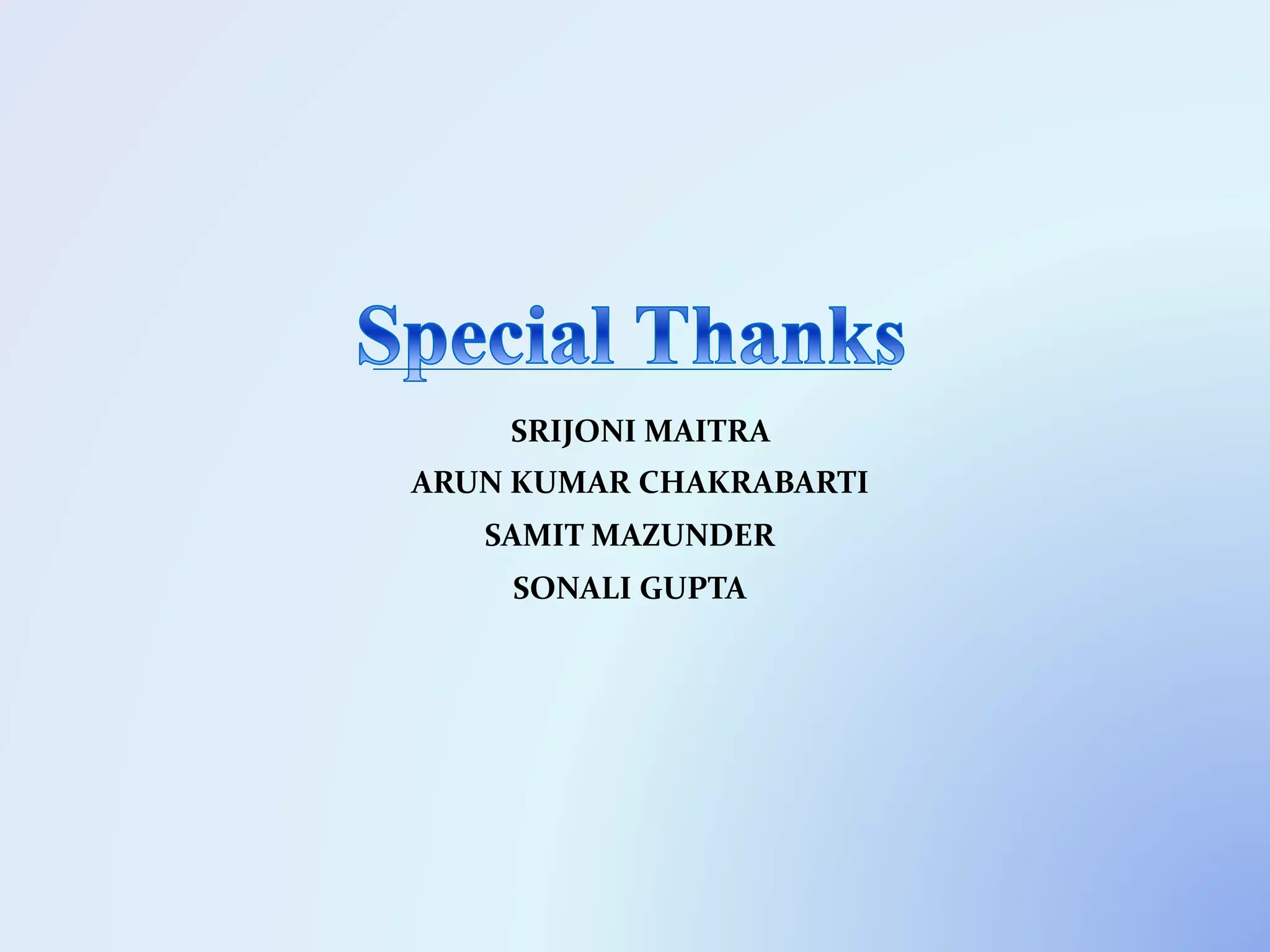The document discusses the concept of encryption, which secures data by converting plain text into encoded text through a specific algorithm, ensuring privacy during transmission. It outlines the process of both encryption and decryption, detailing the variables and mathematical operations involved. Additionally, it mentions the use of a skip variable, sender information attachment, and user registration options for password protection in encrypted files.
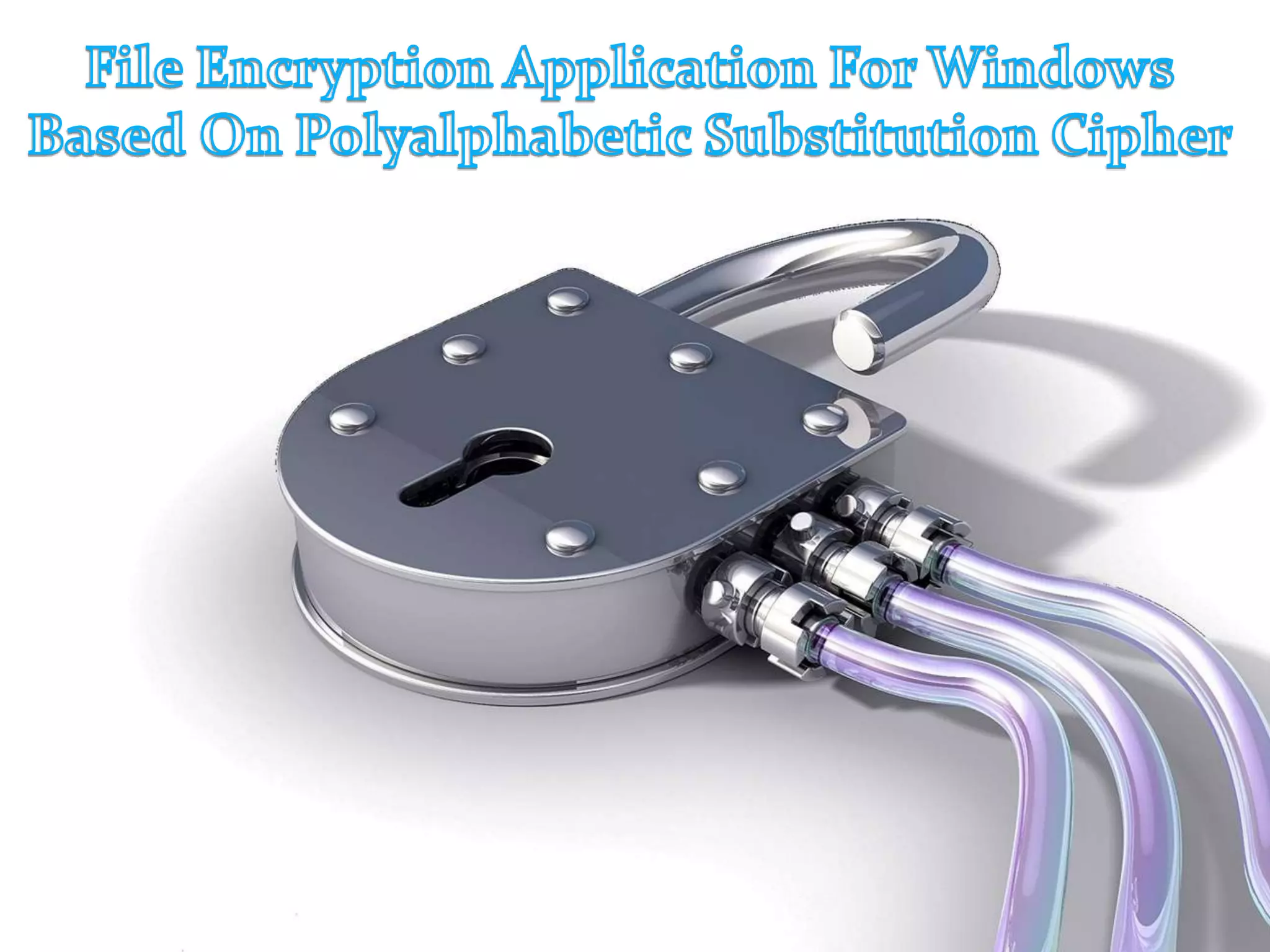

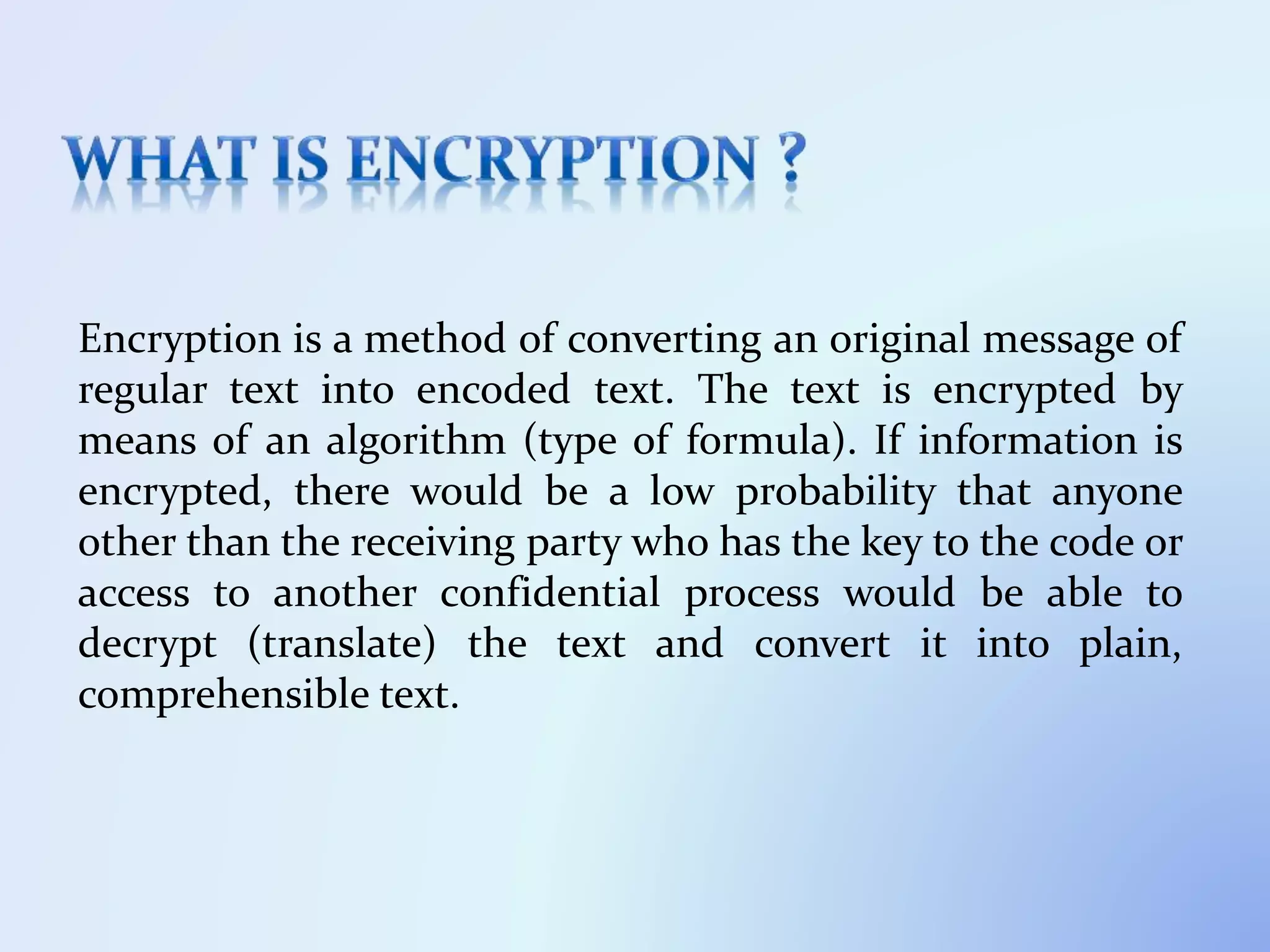
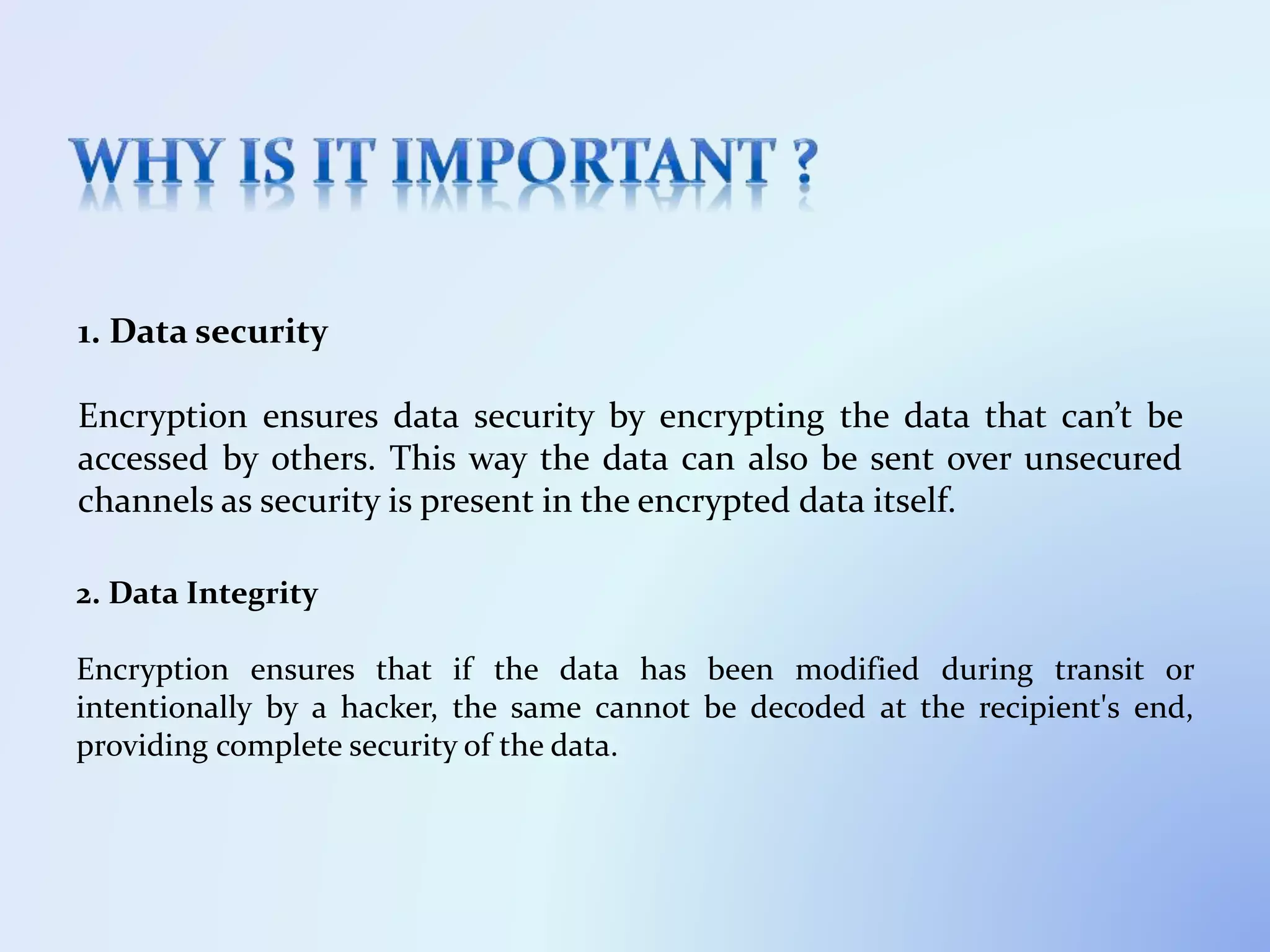
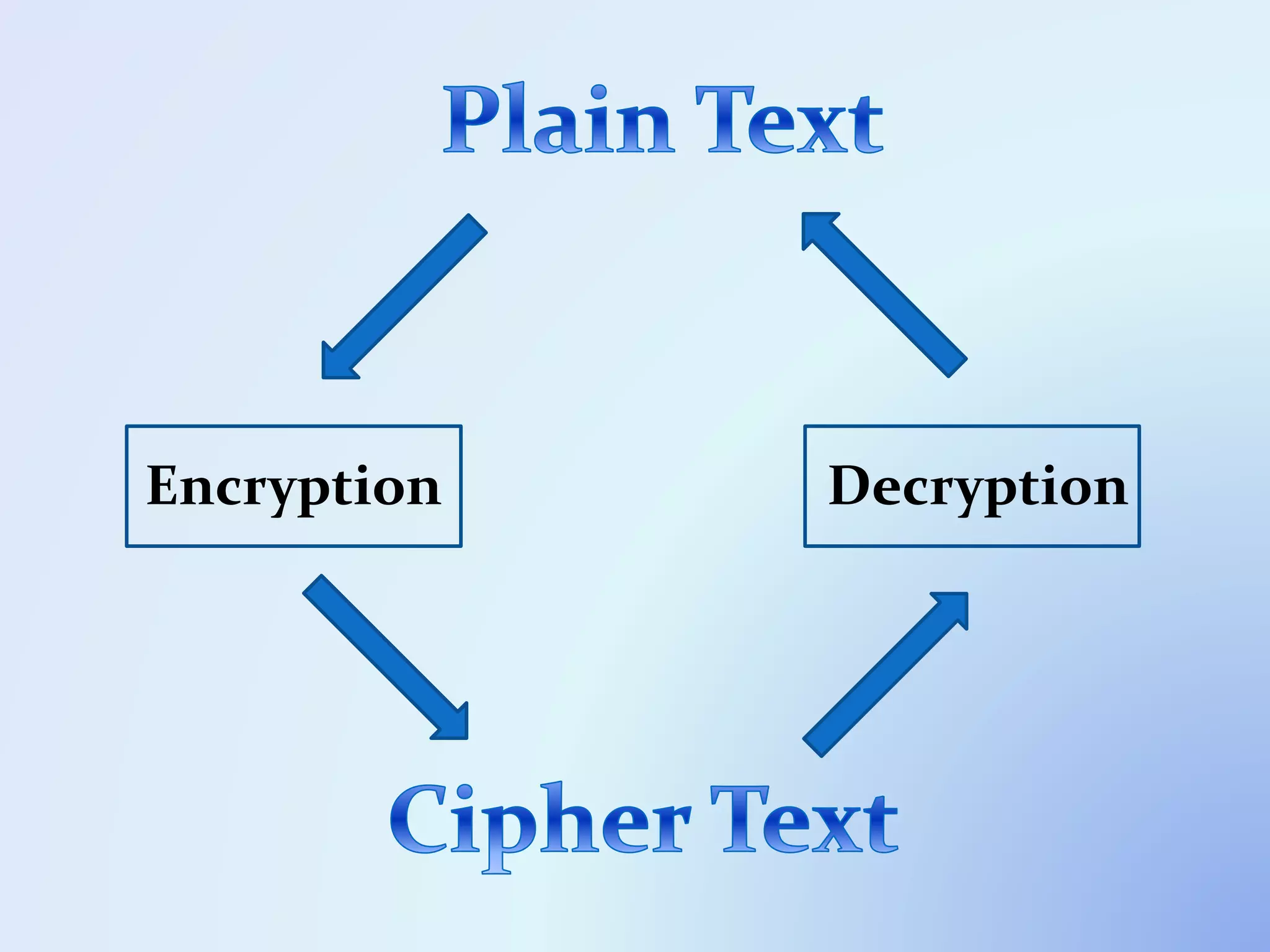

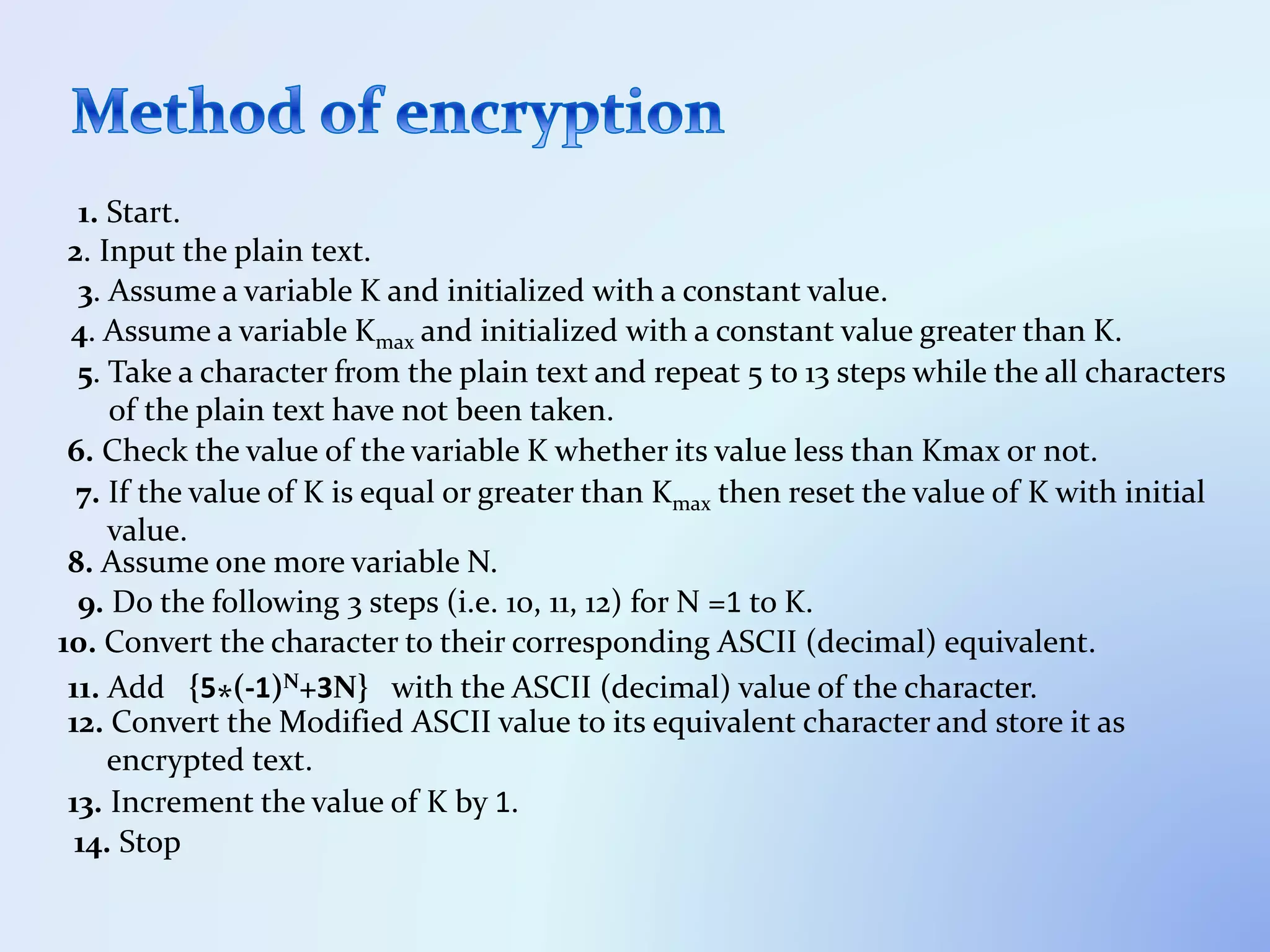

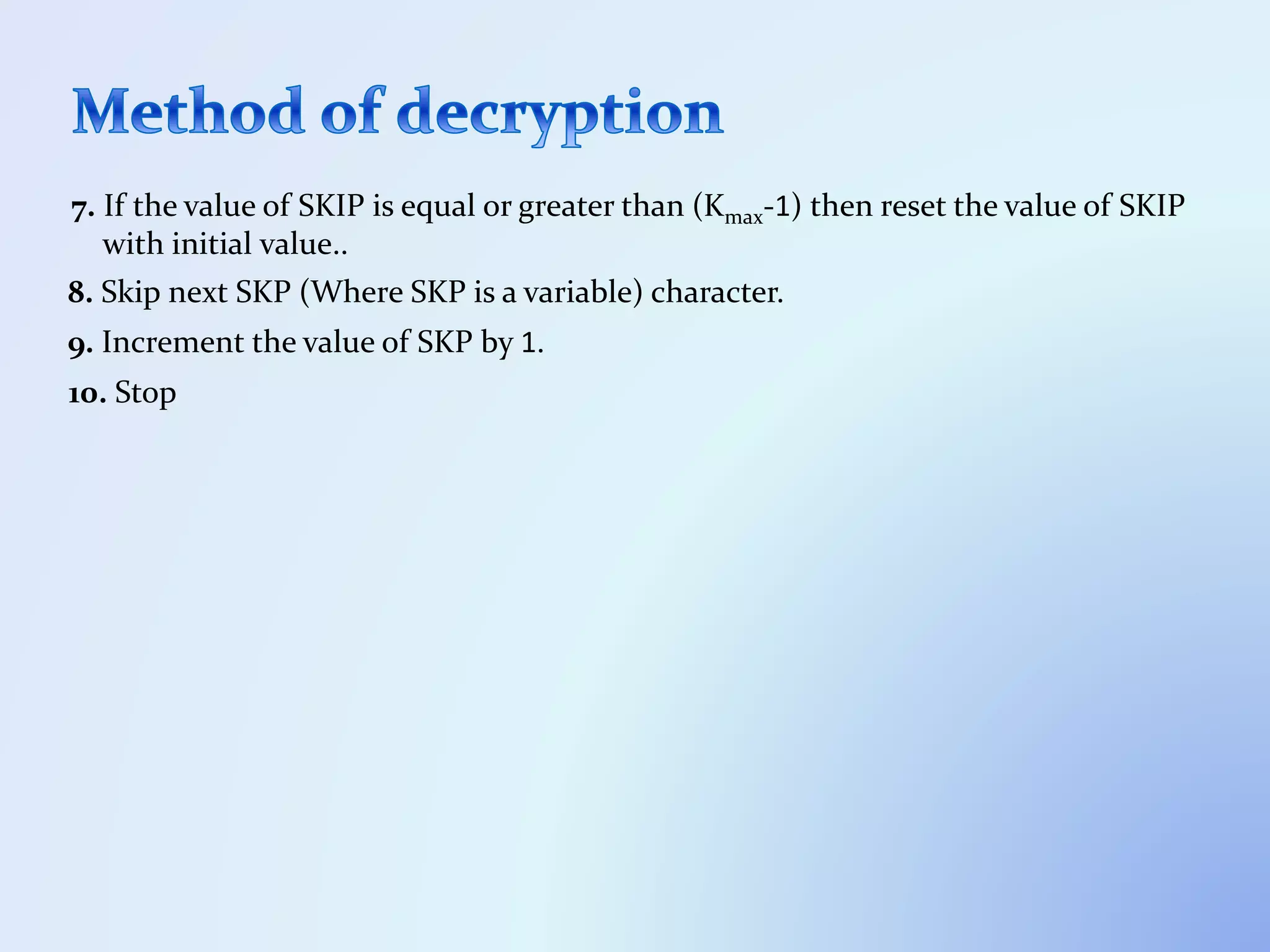
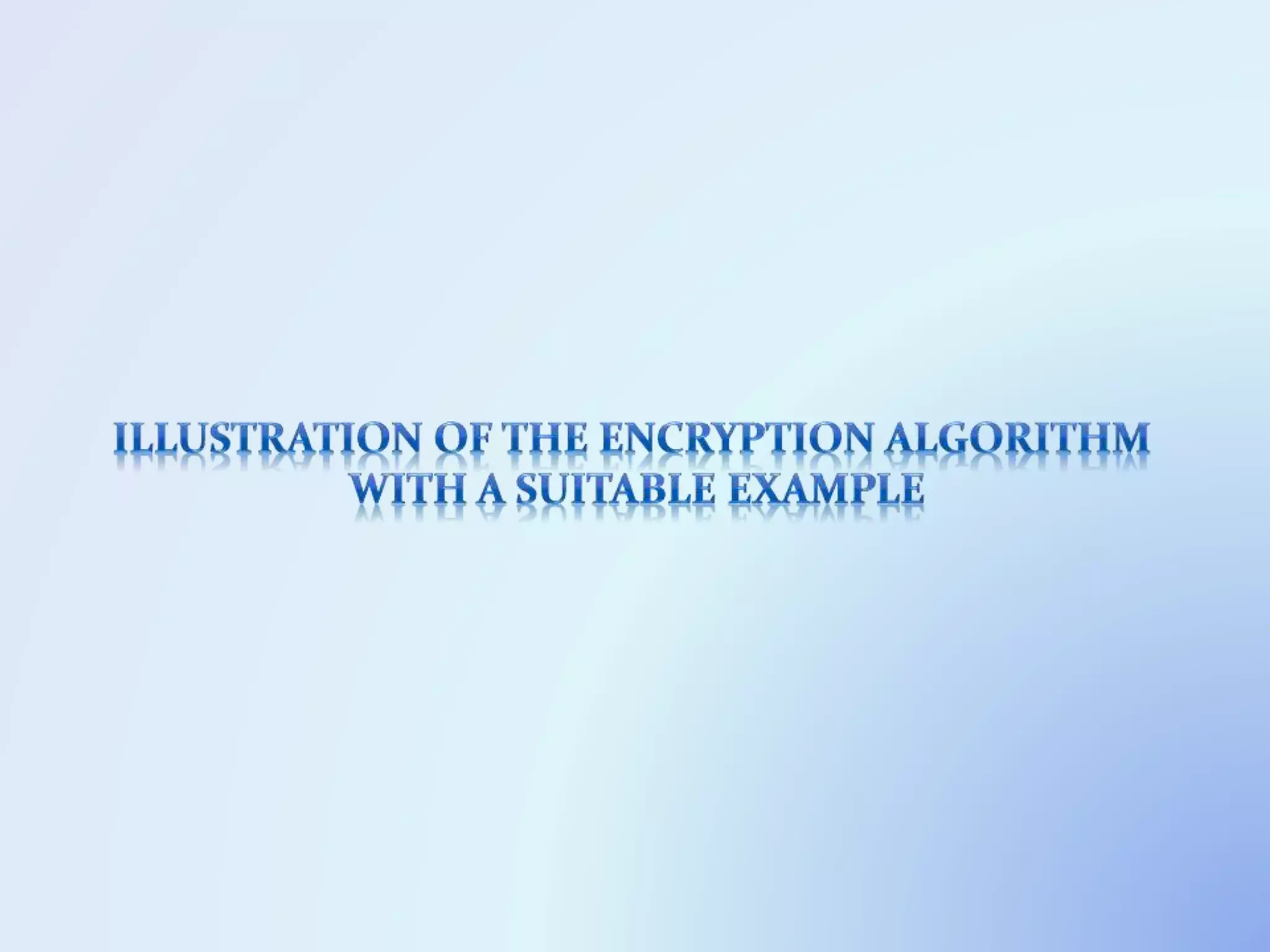
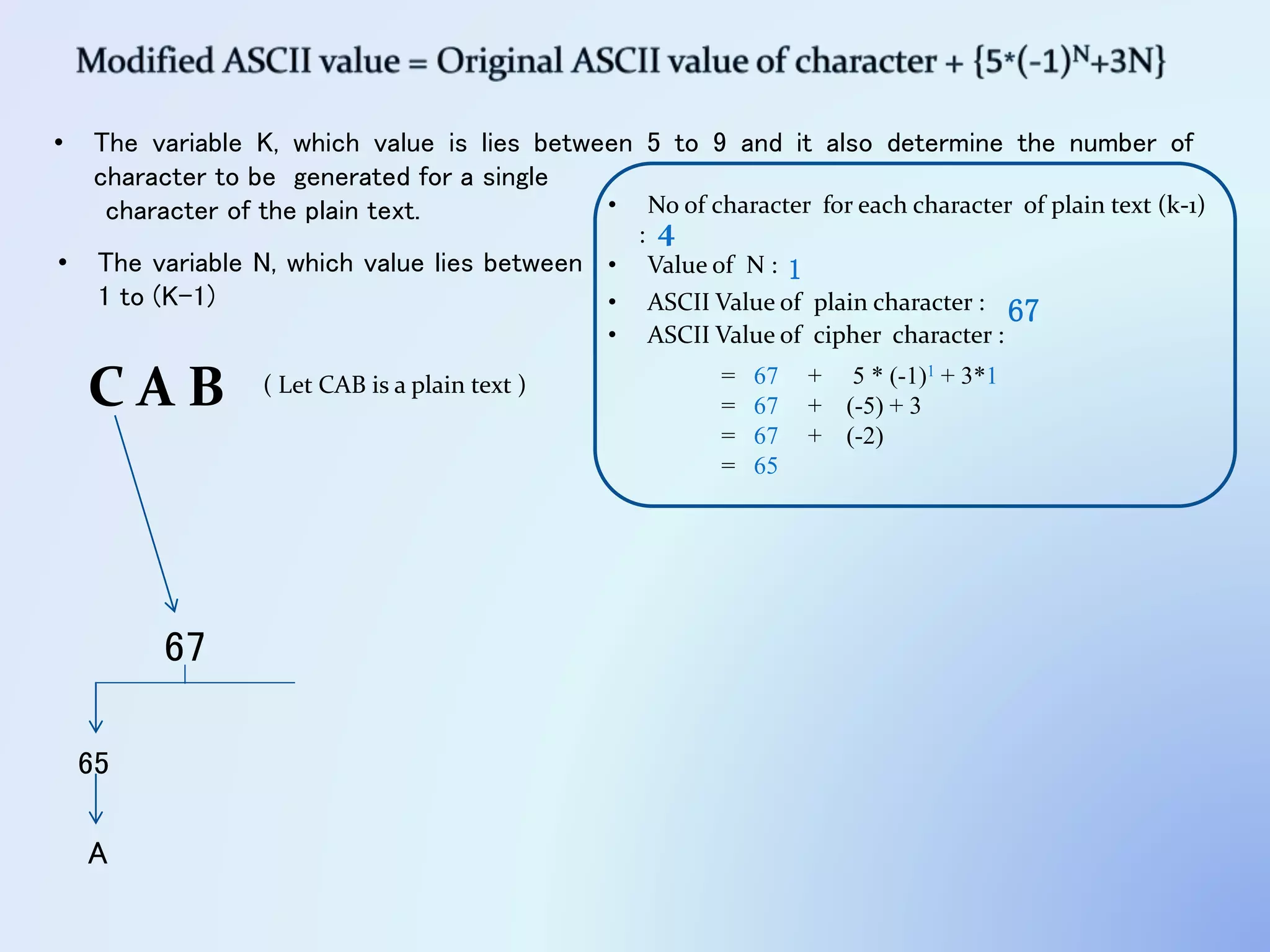
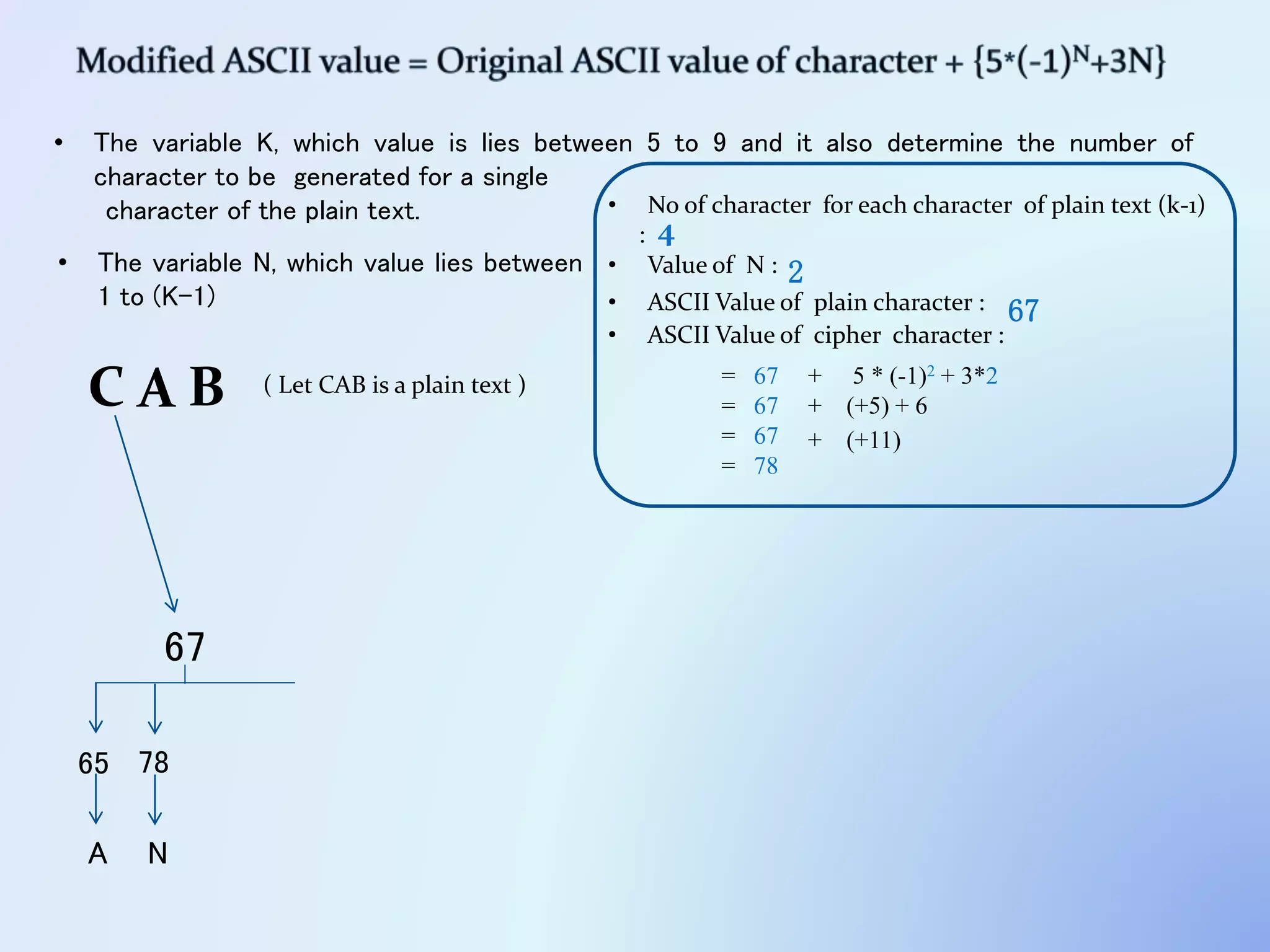

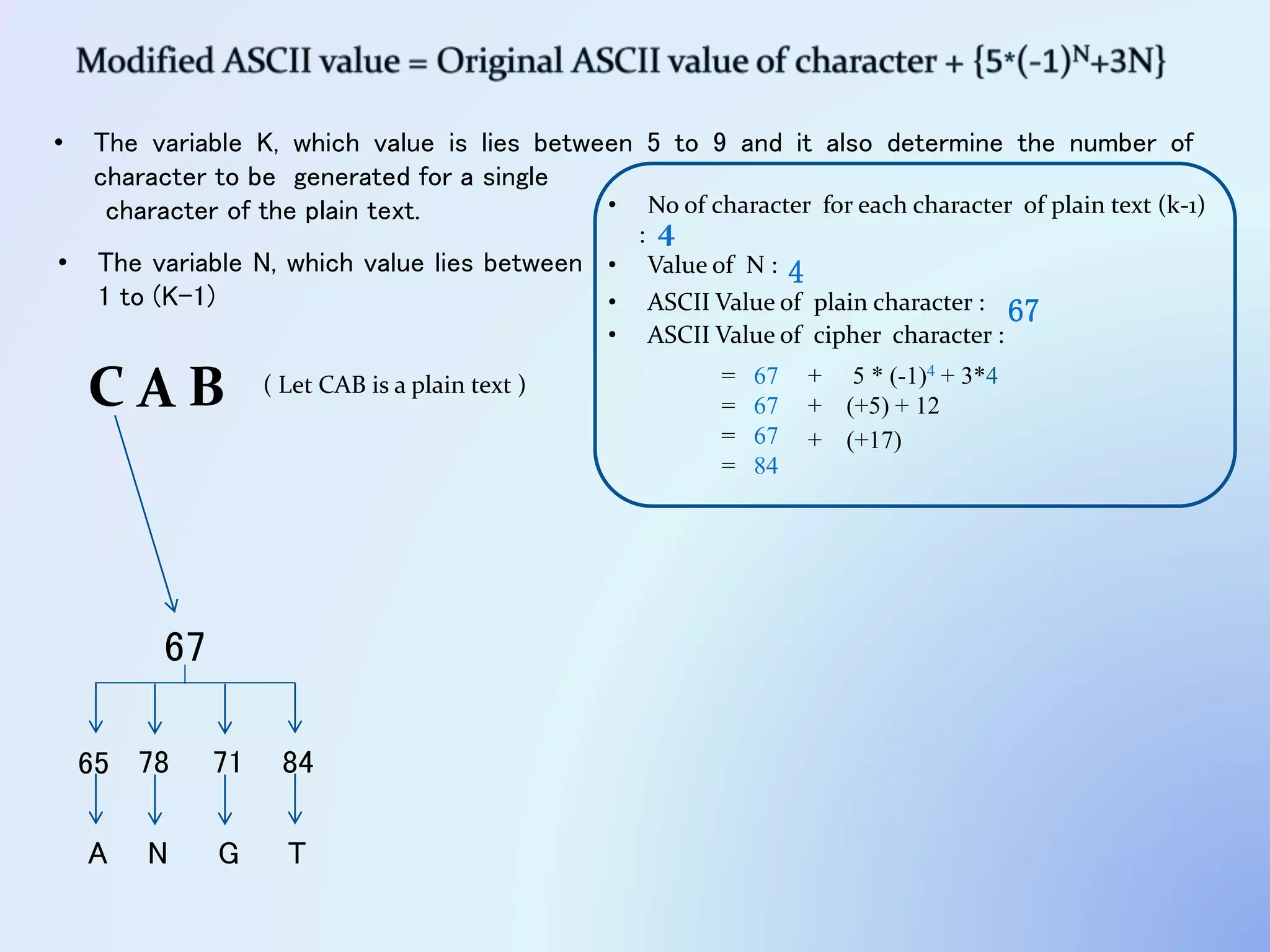
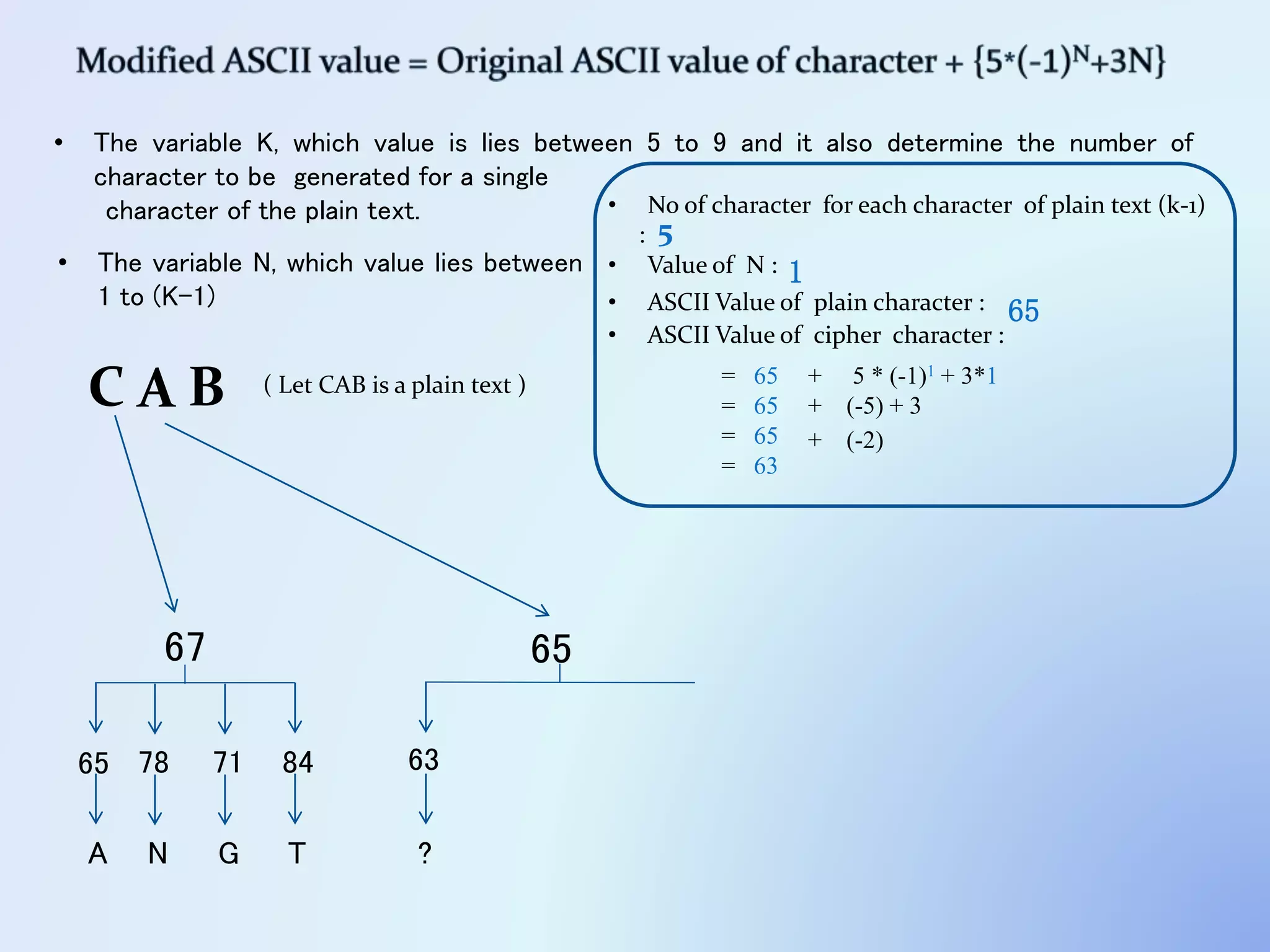


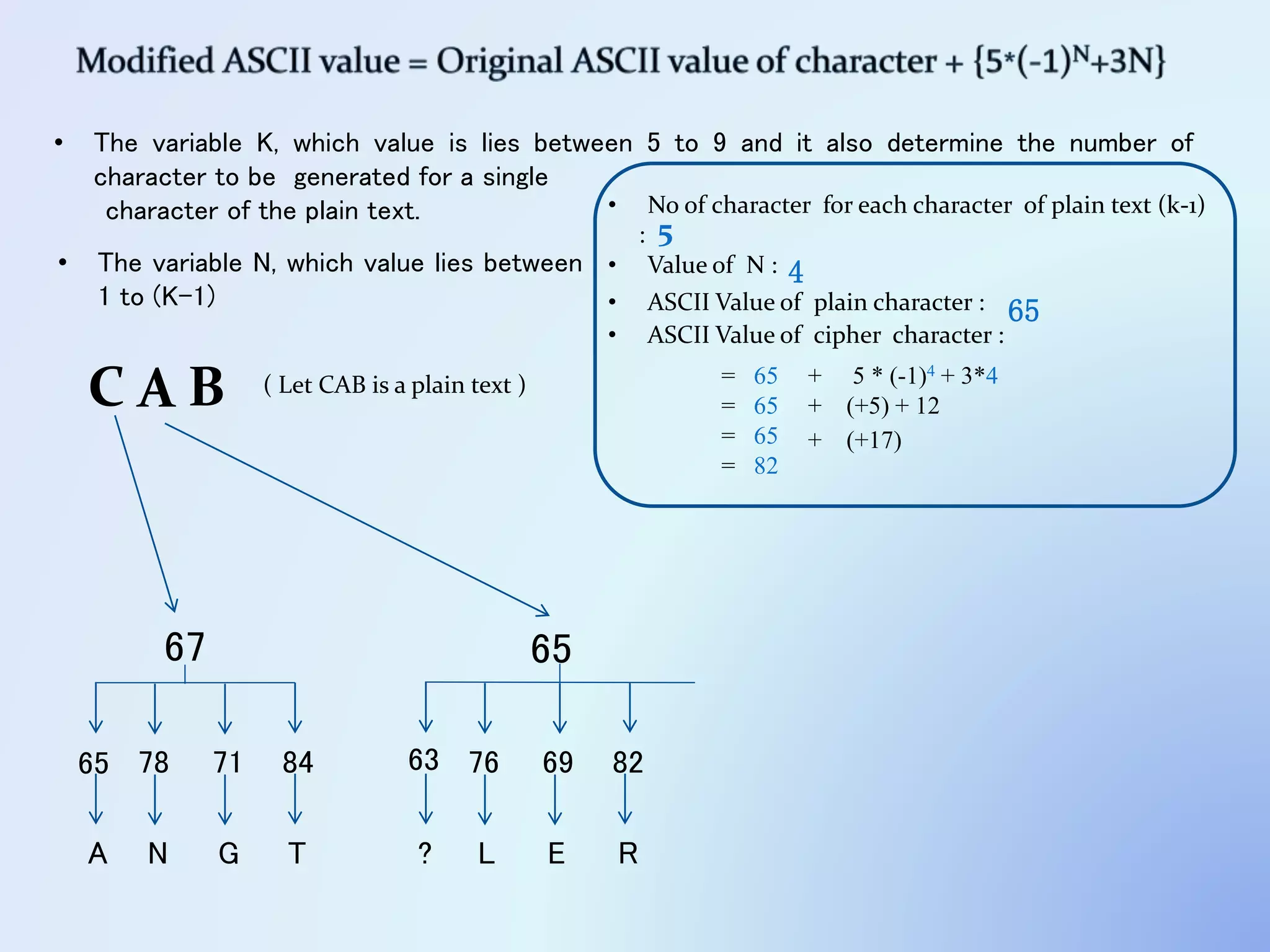
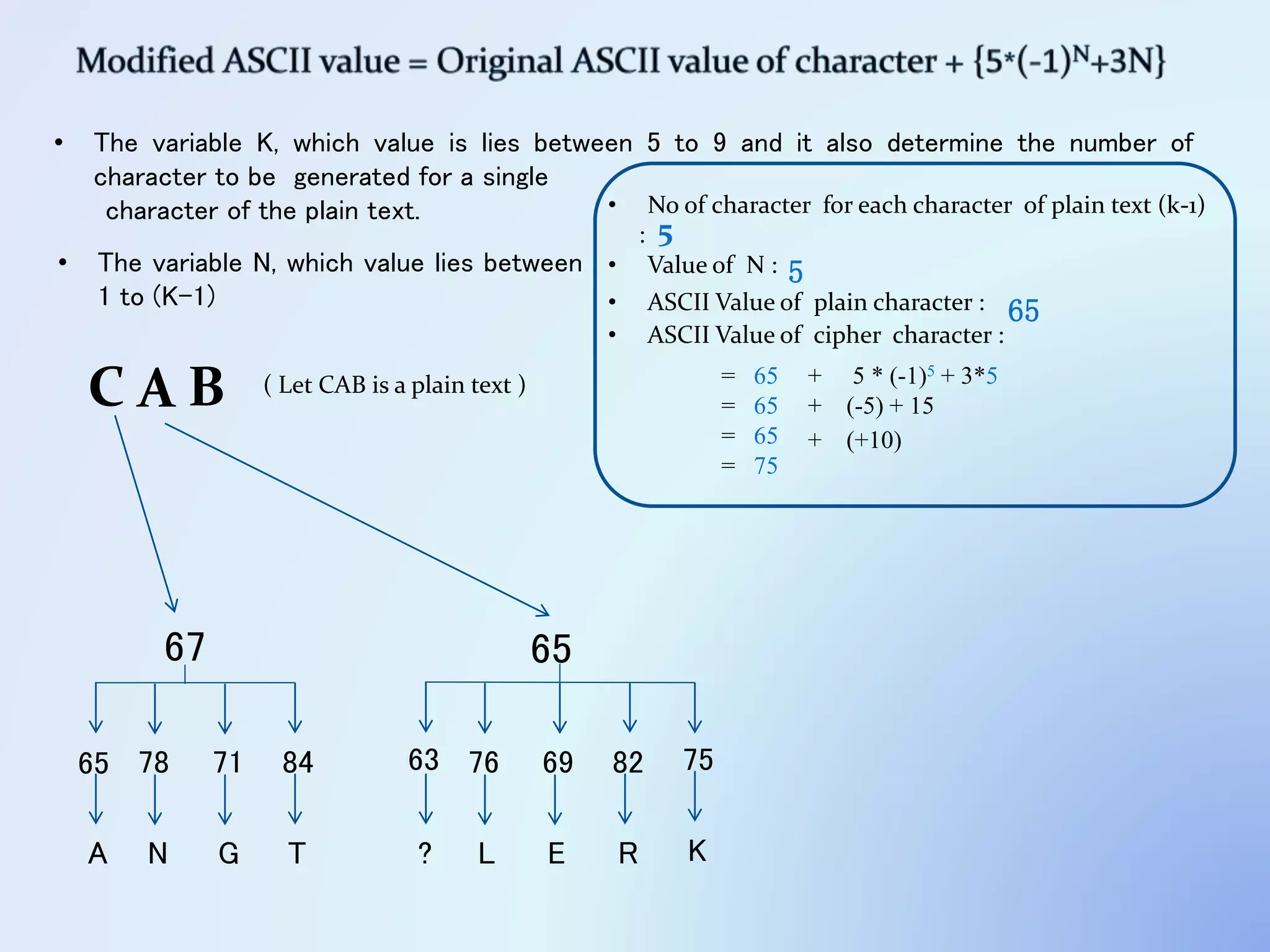
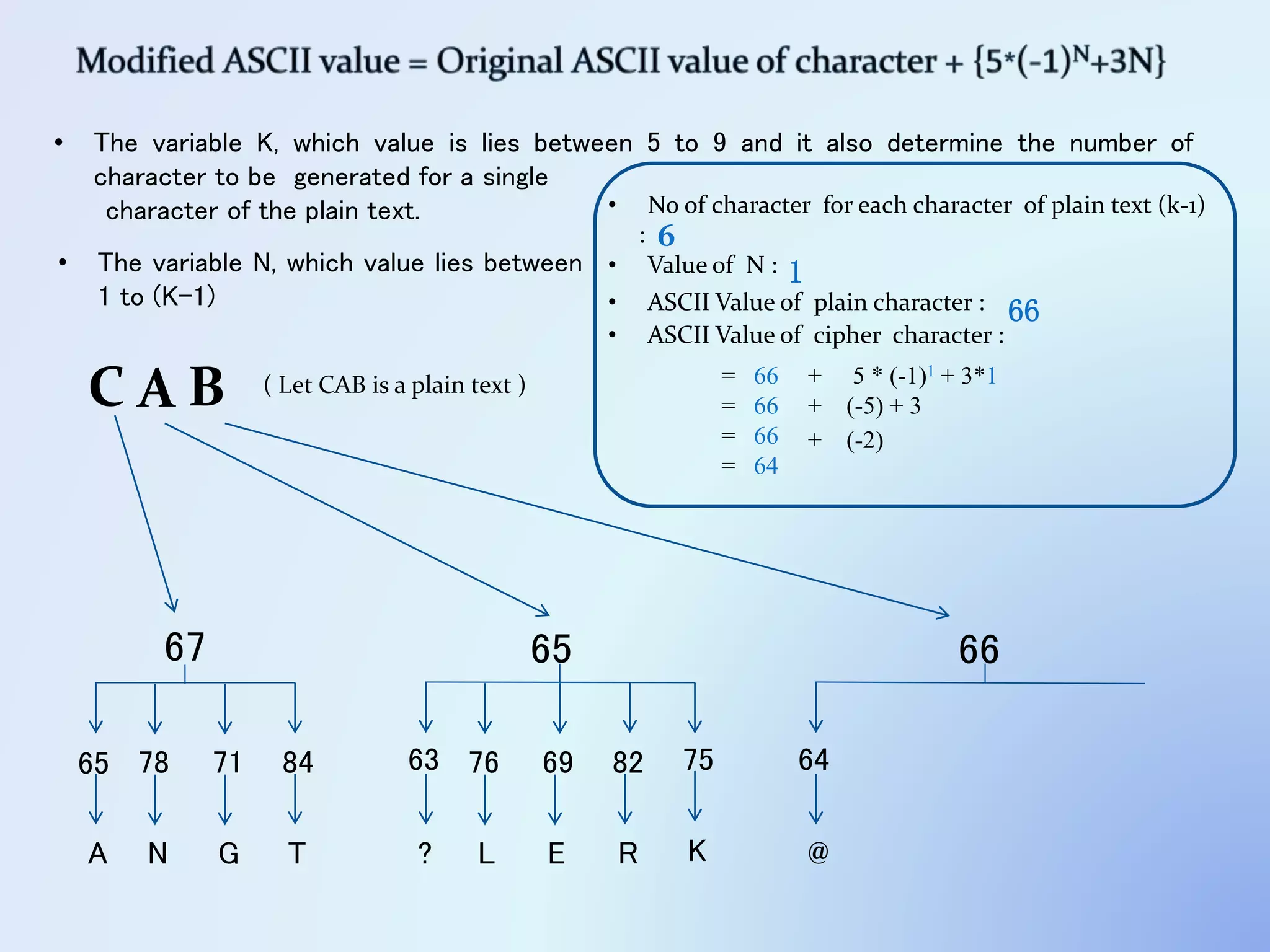
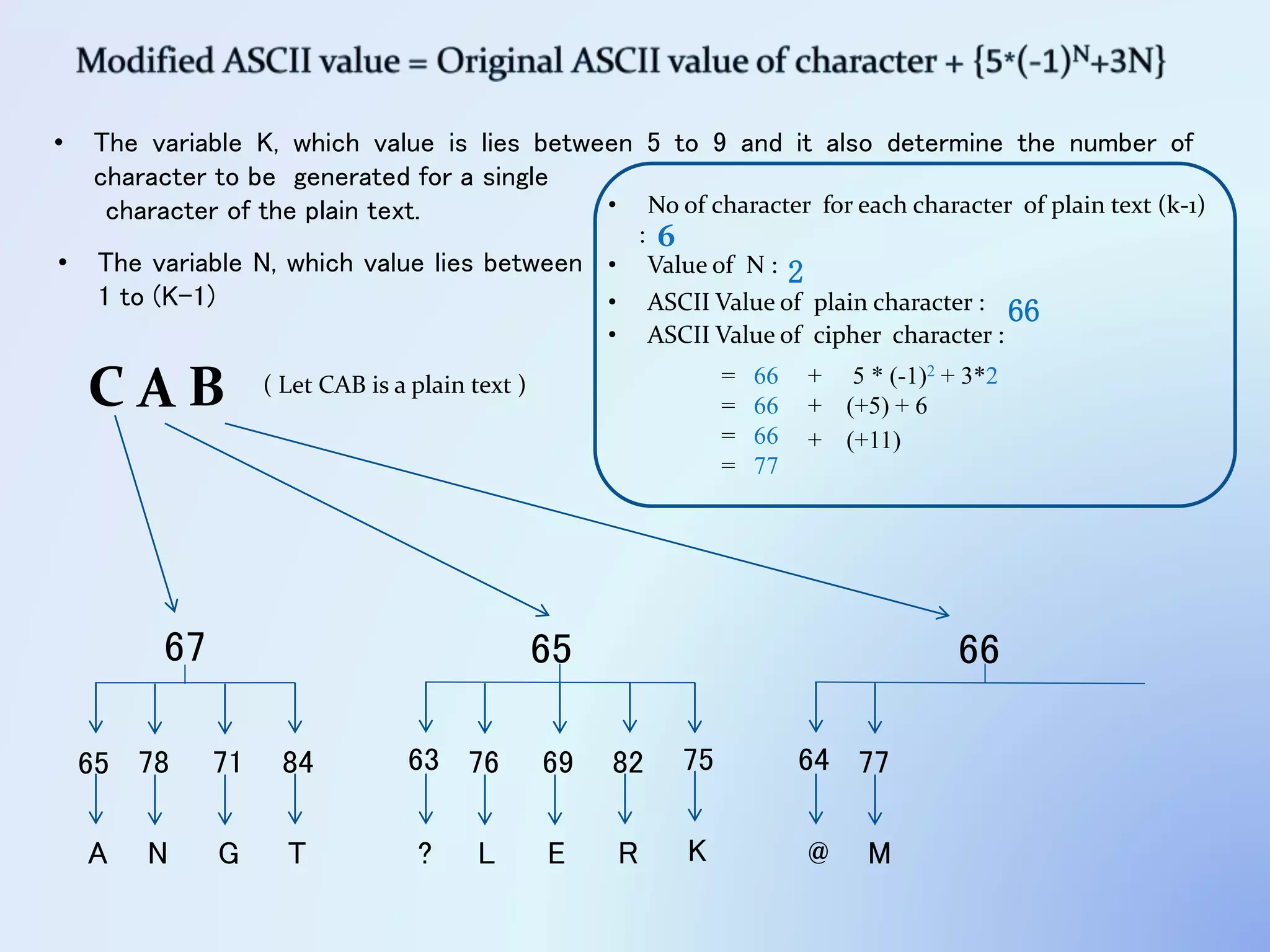
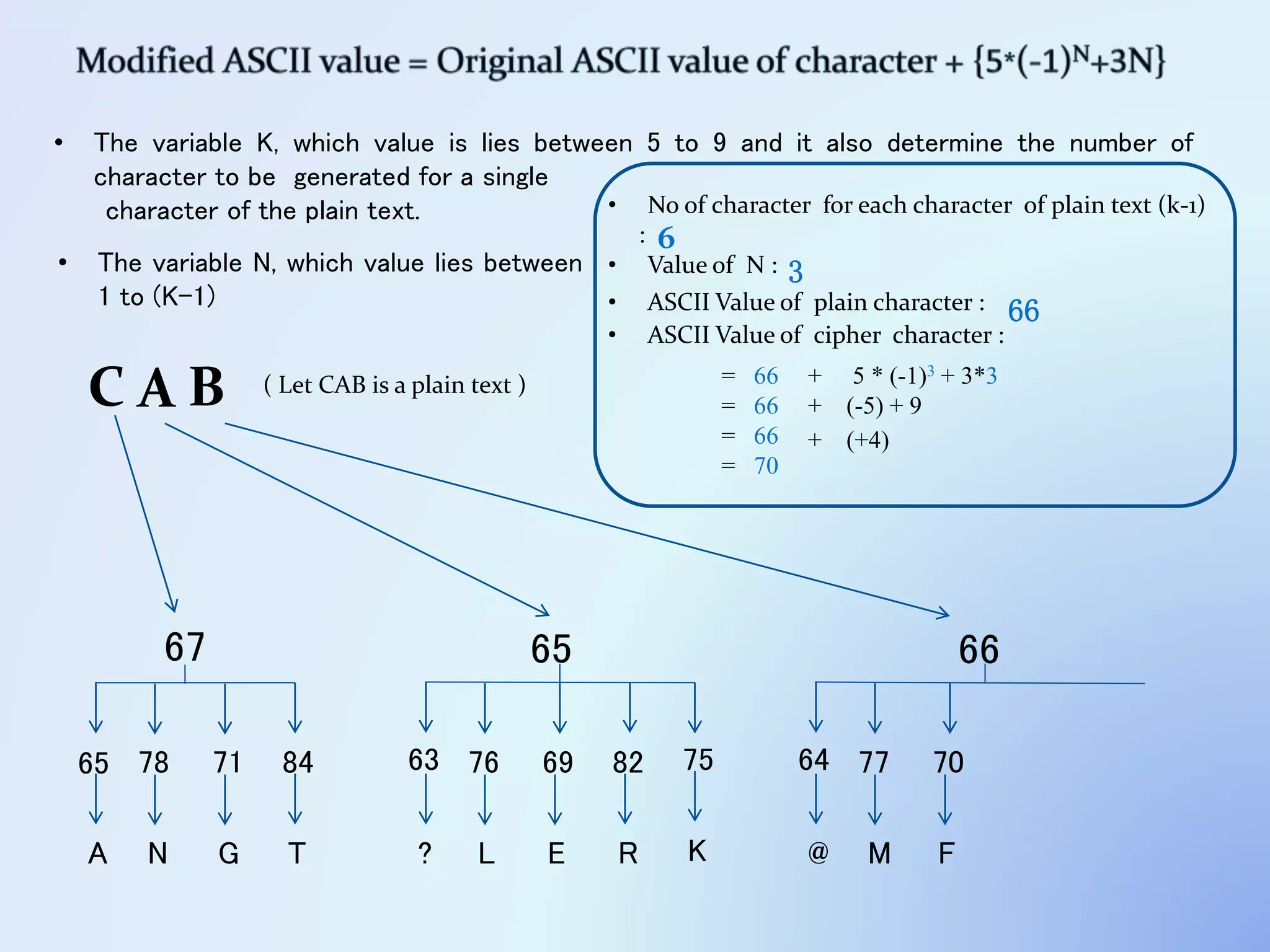

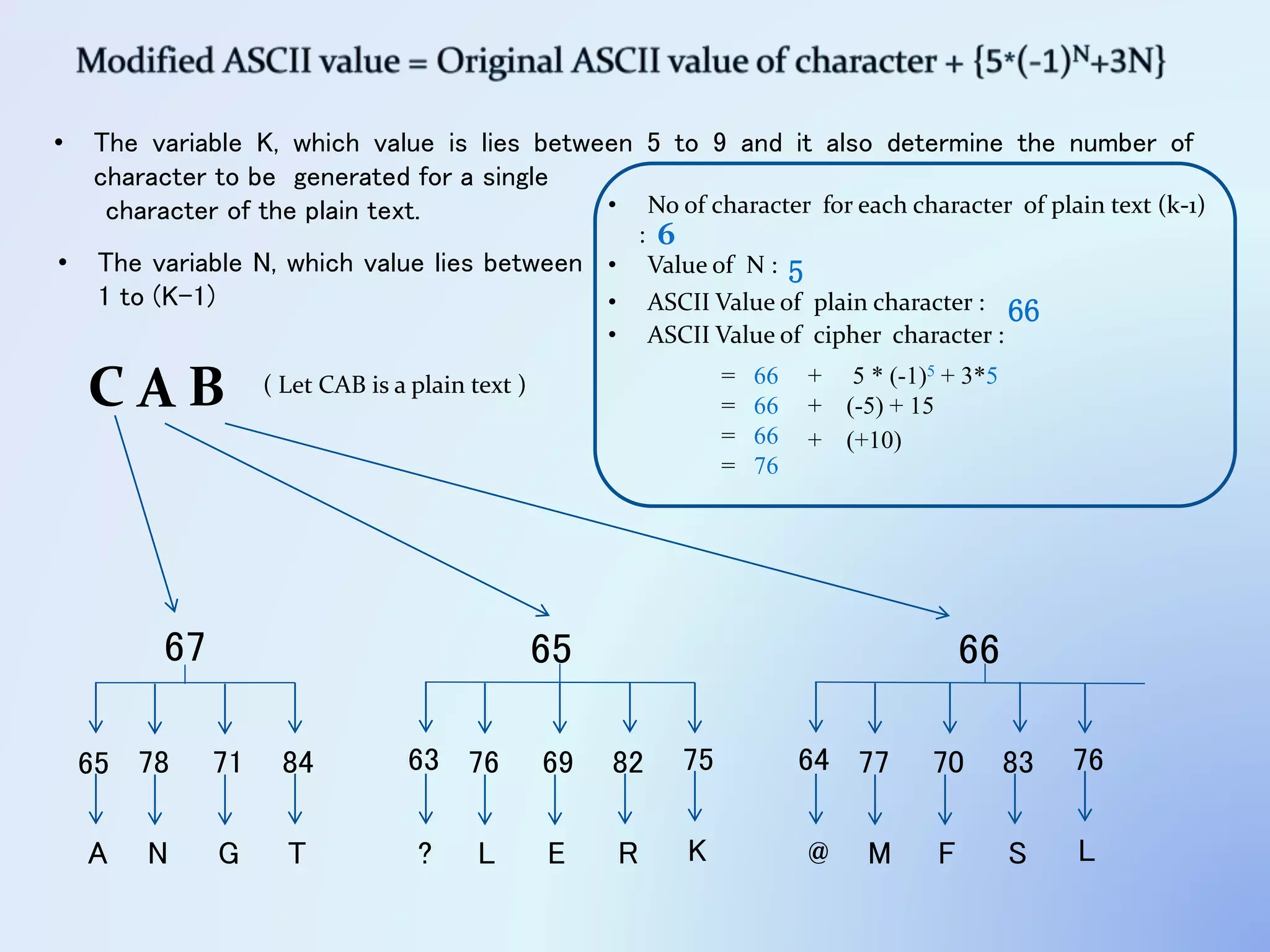
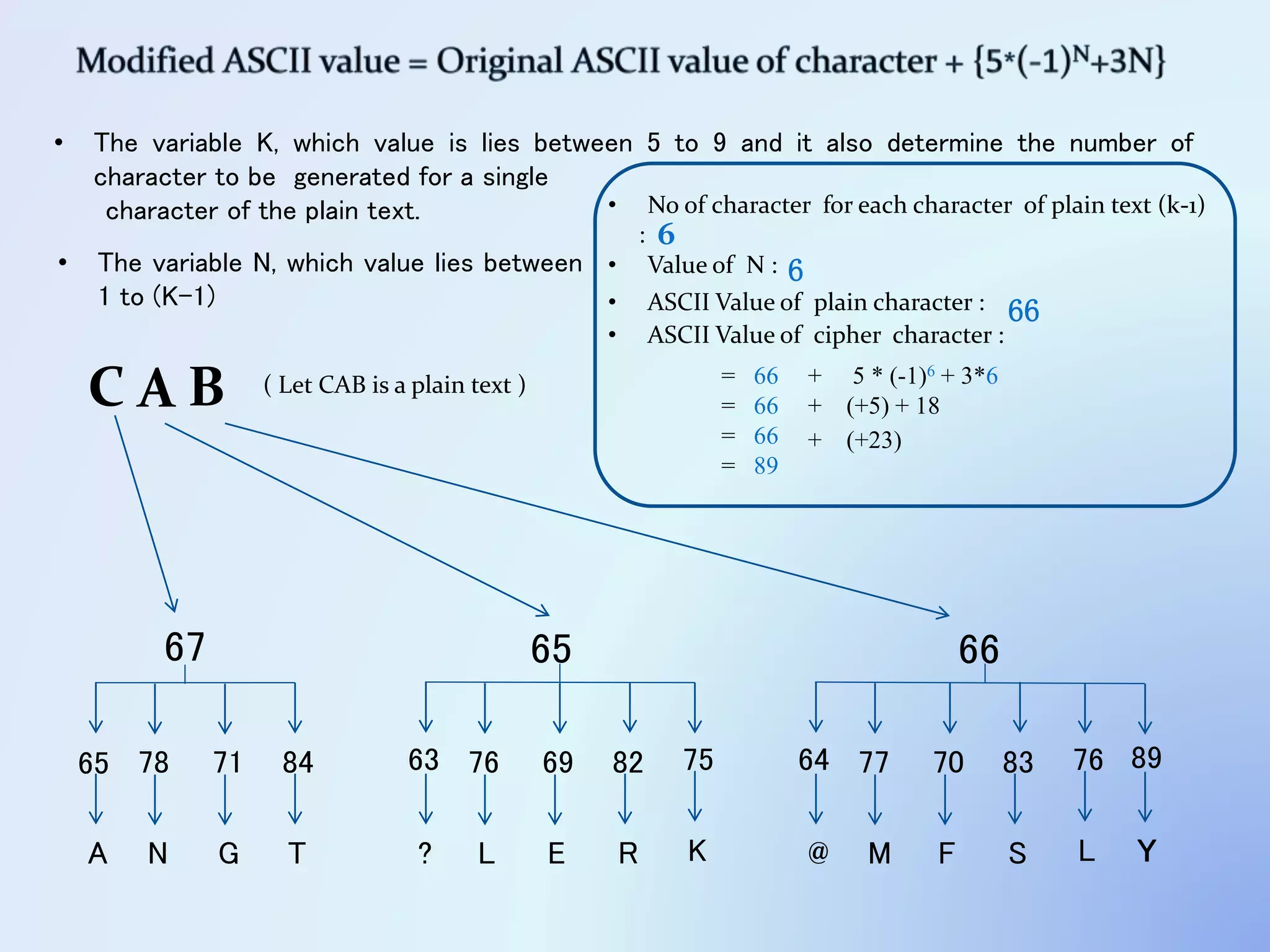

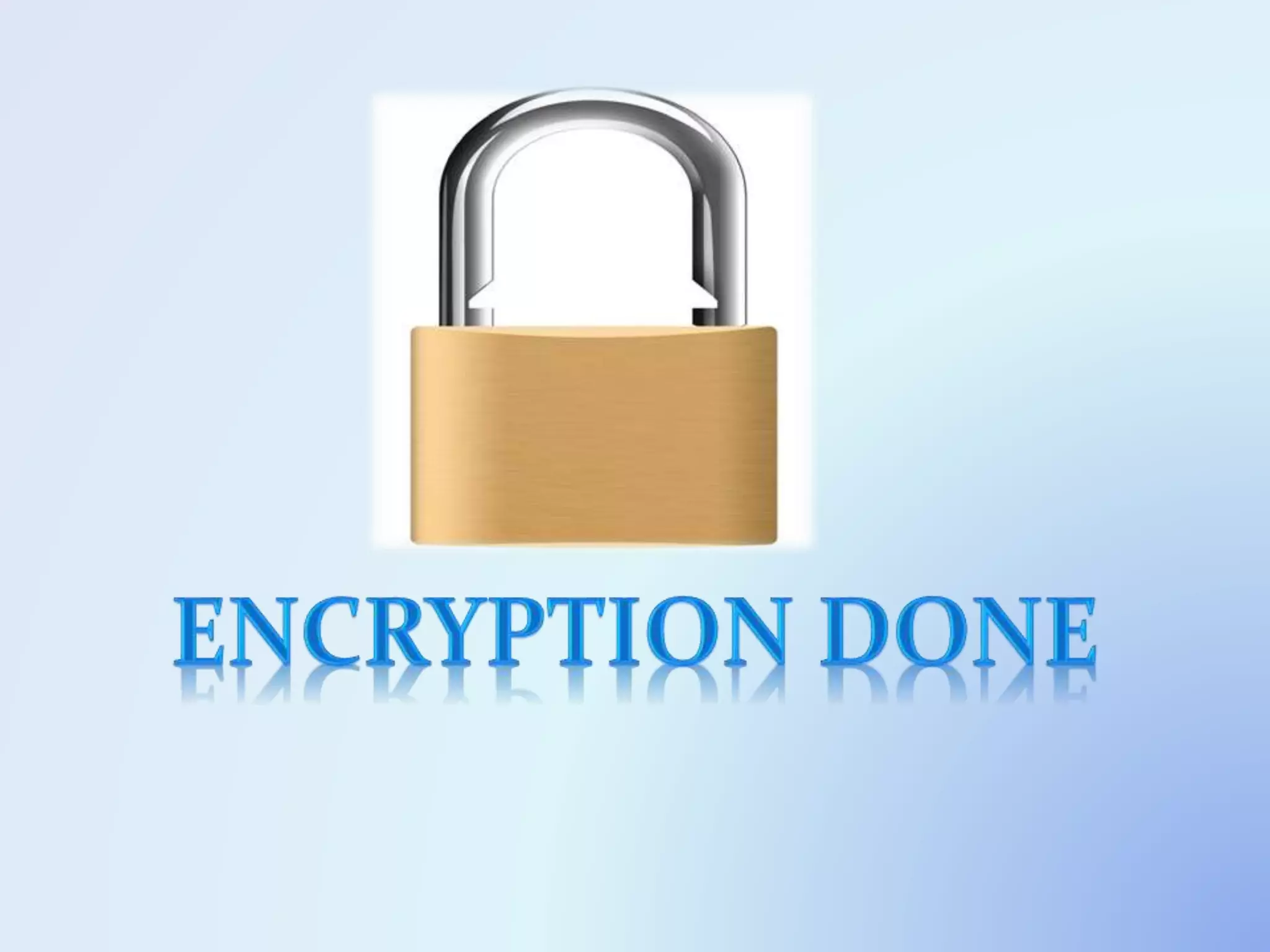
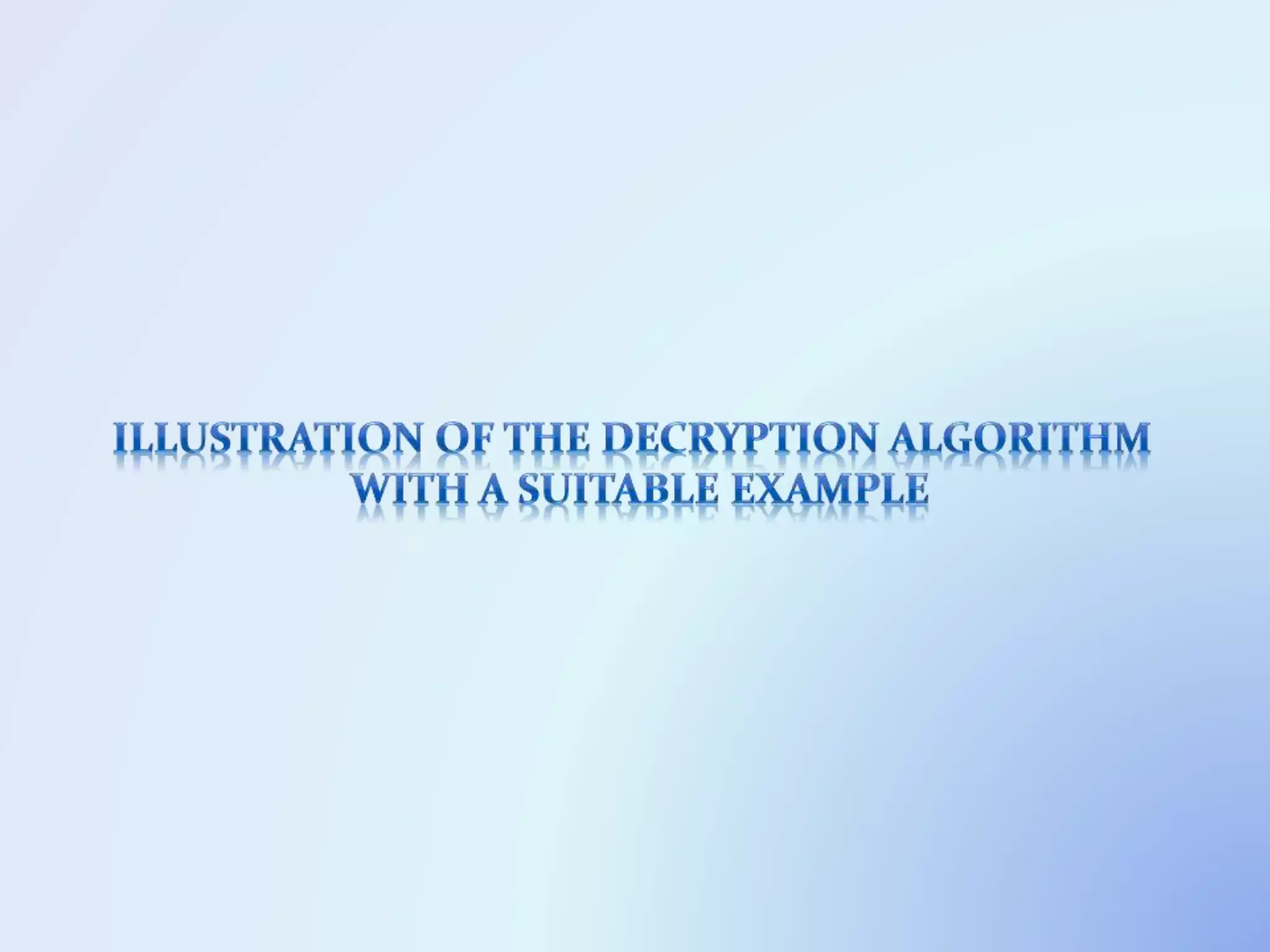
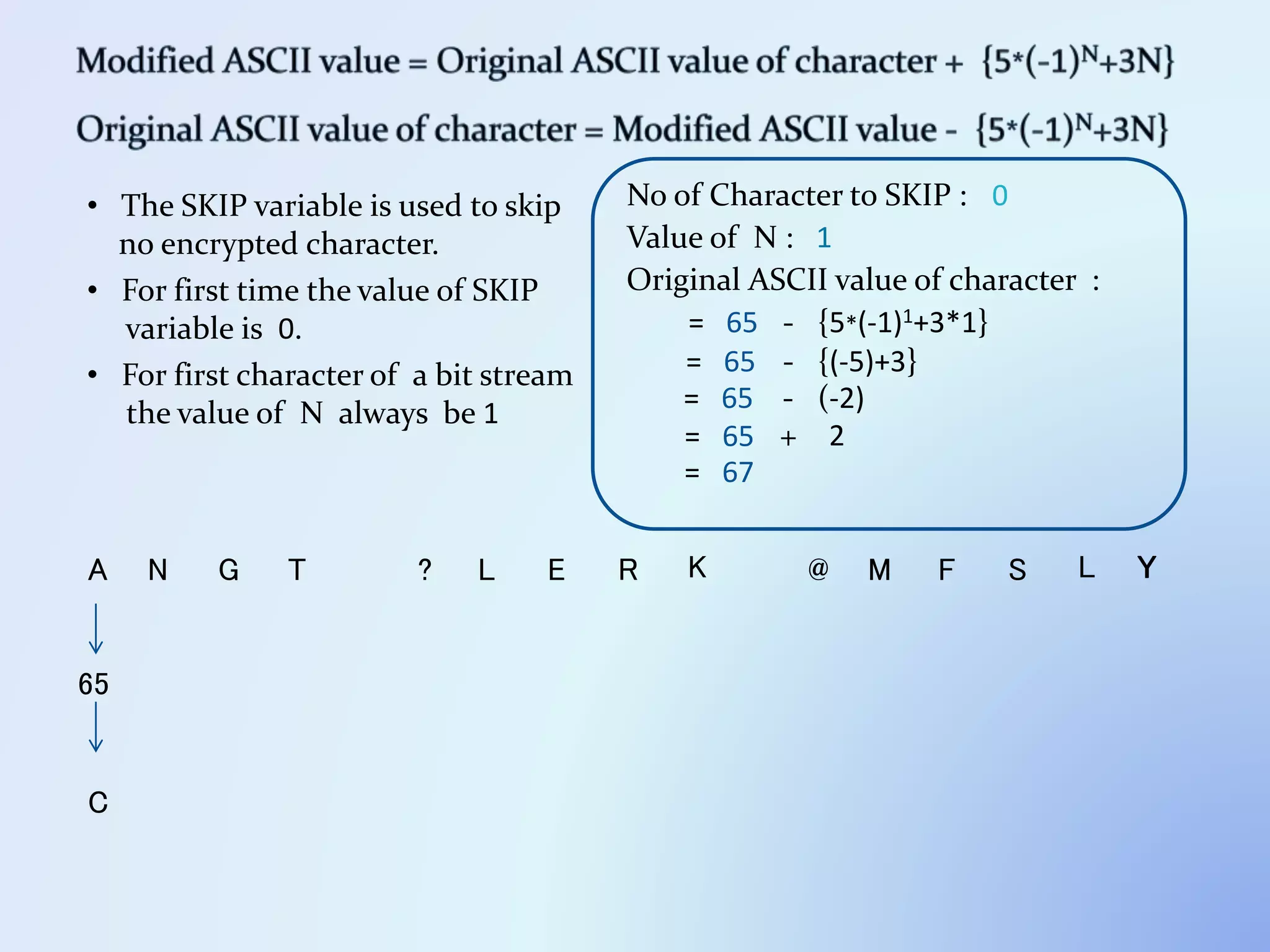
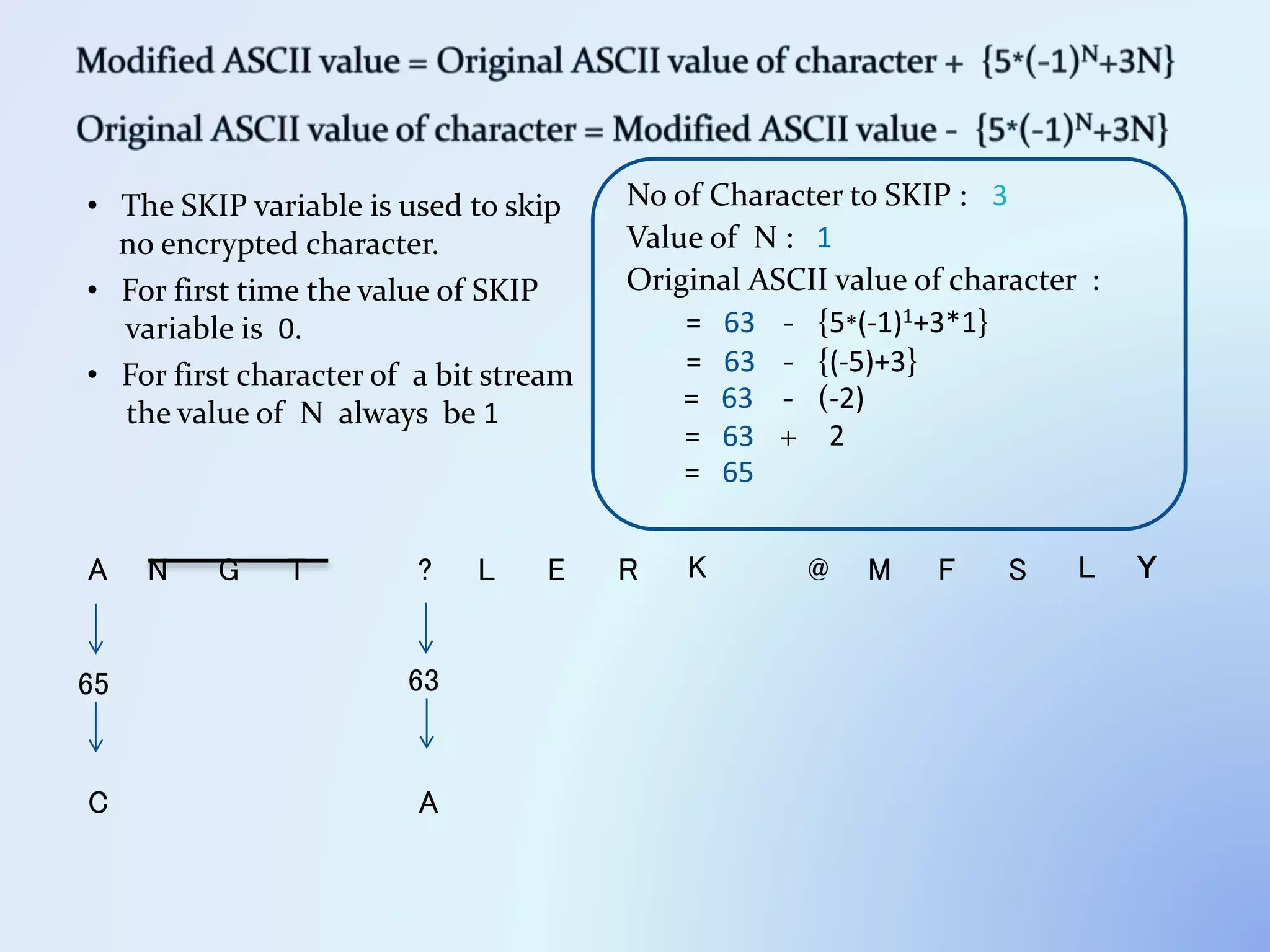

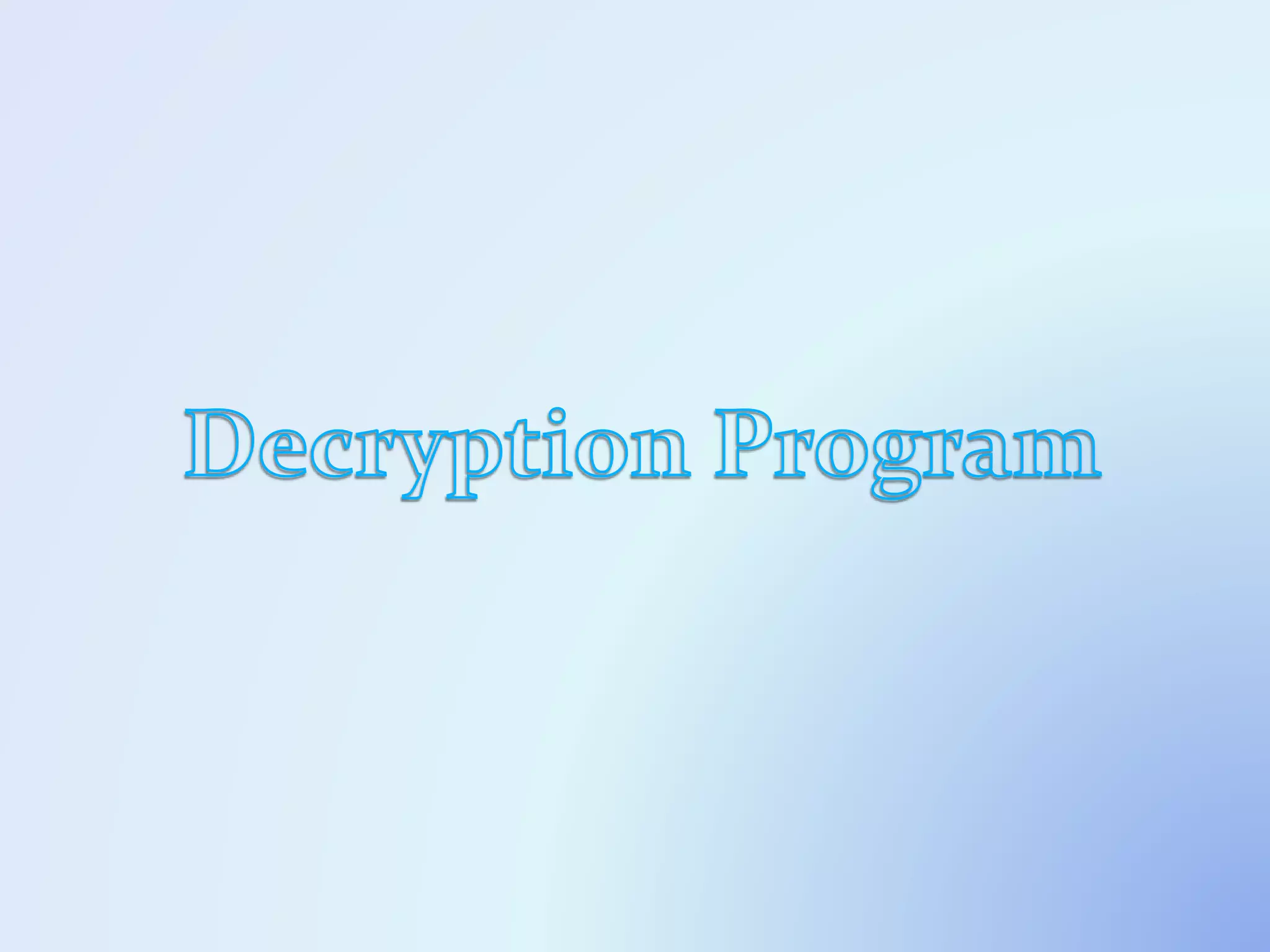
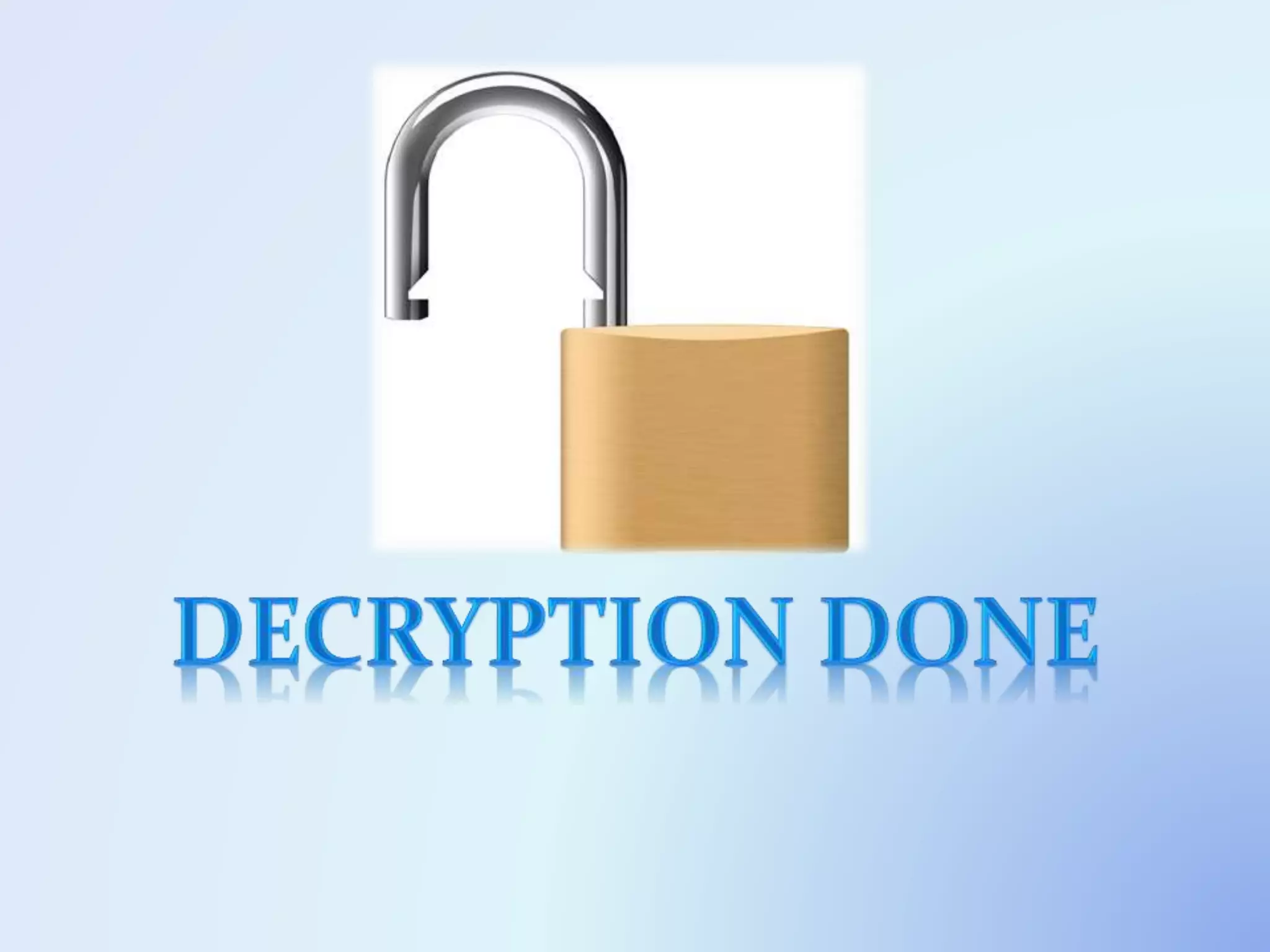
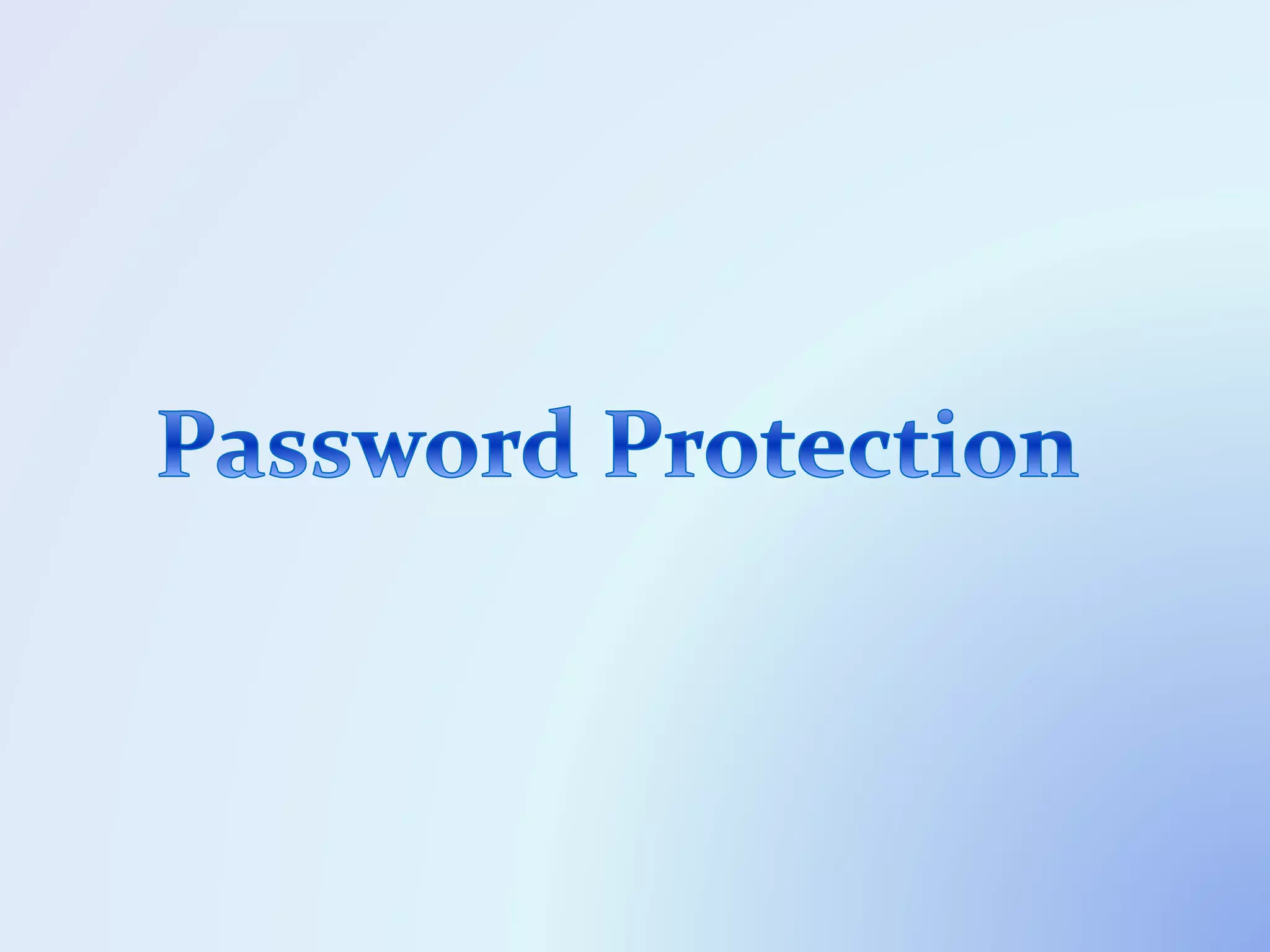
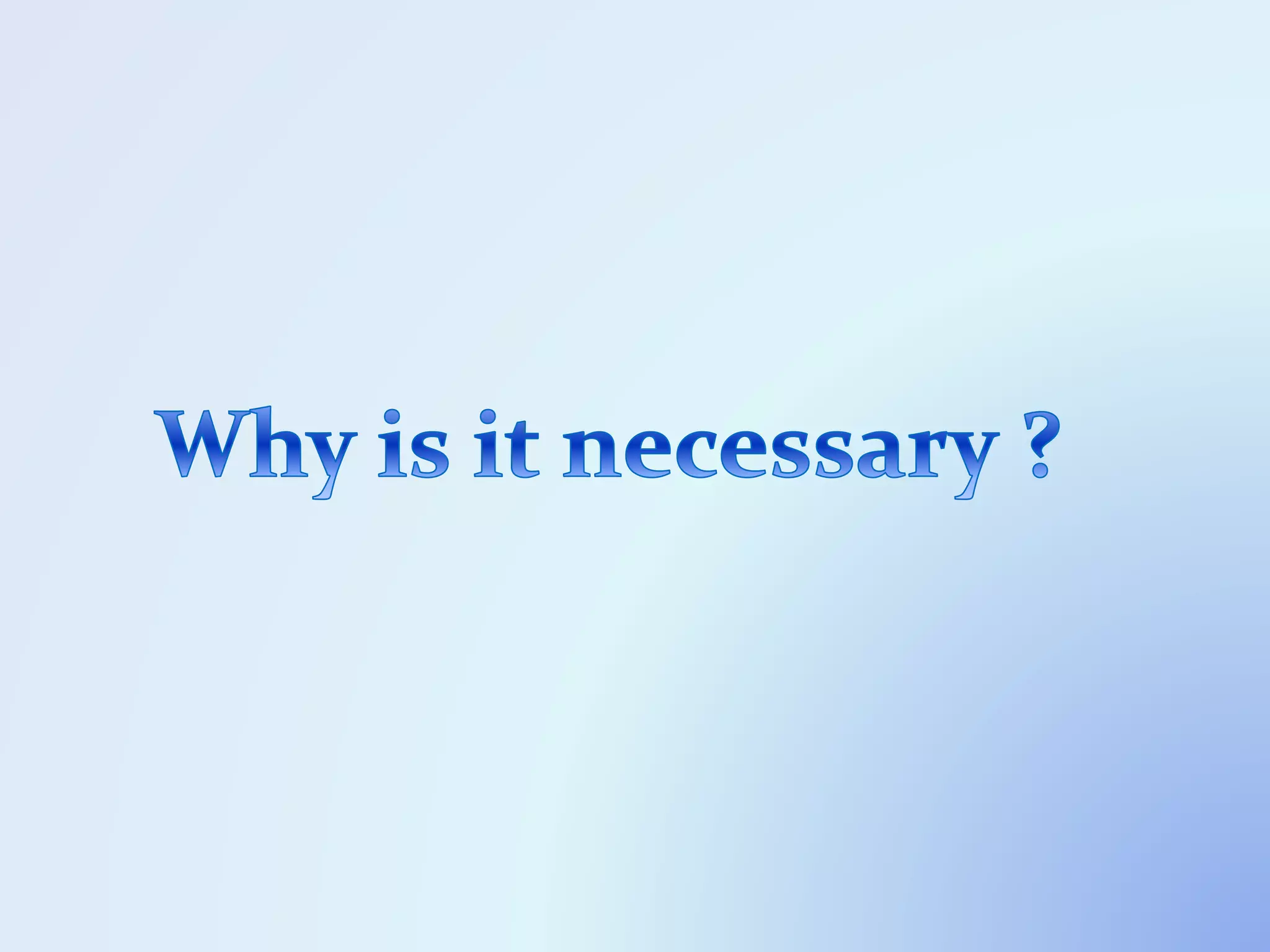
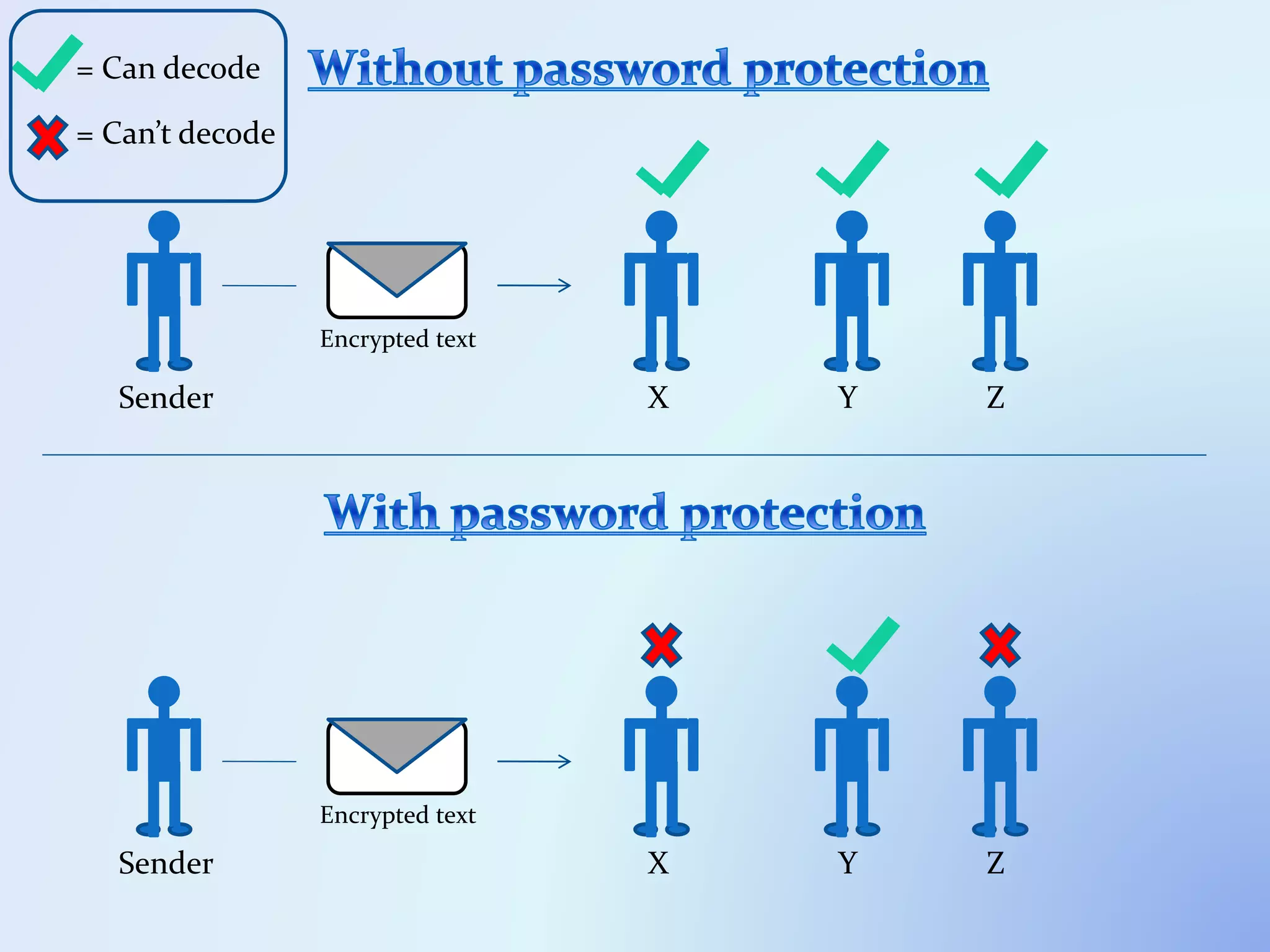

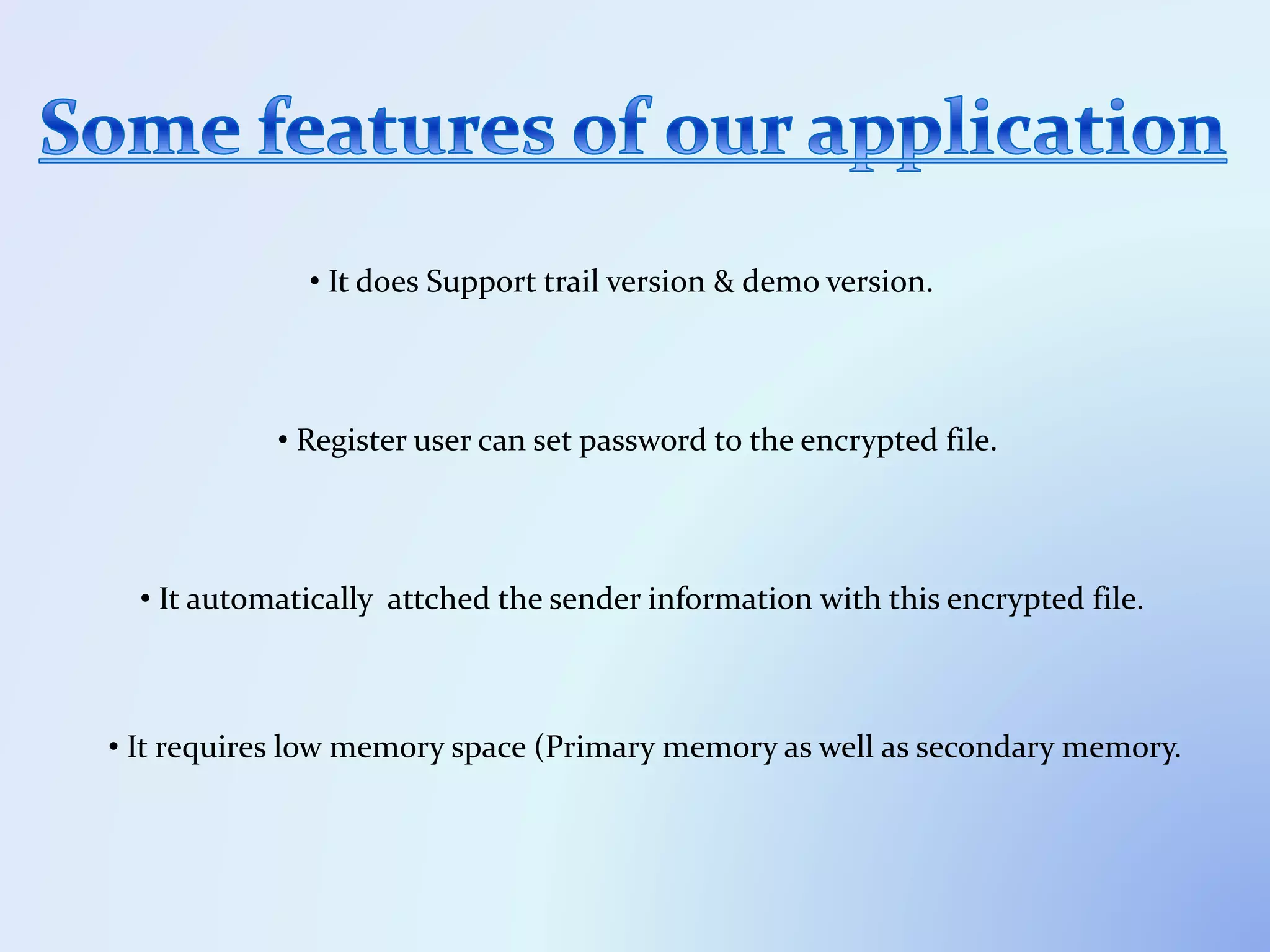
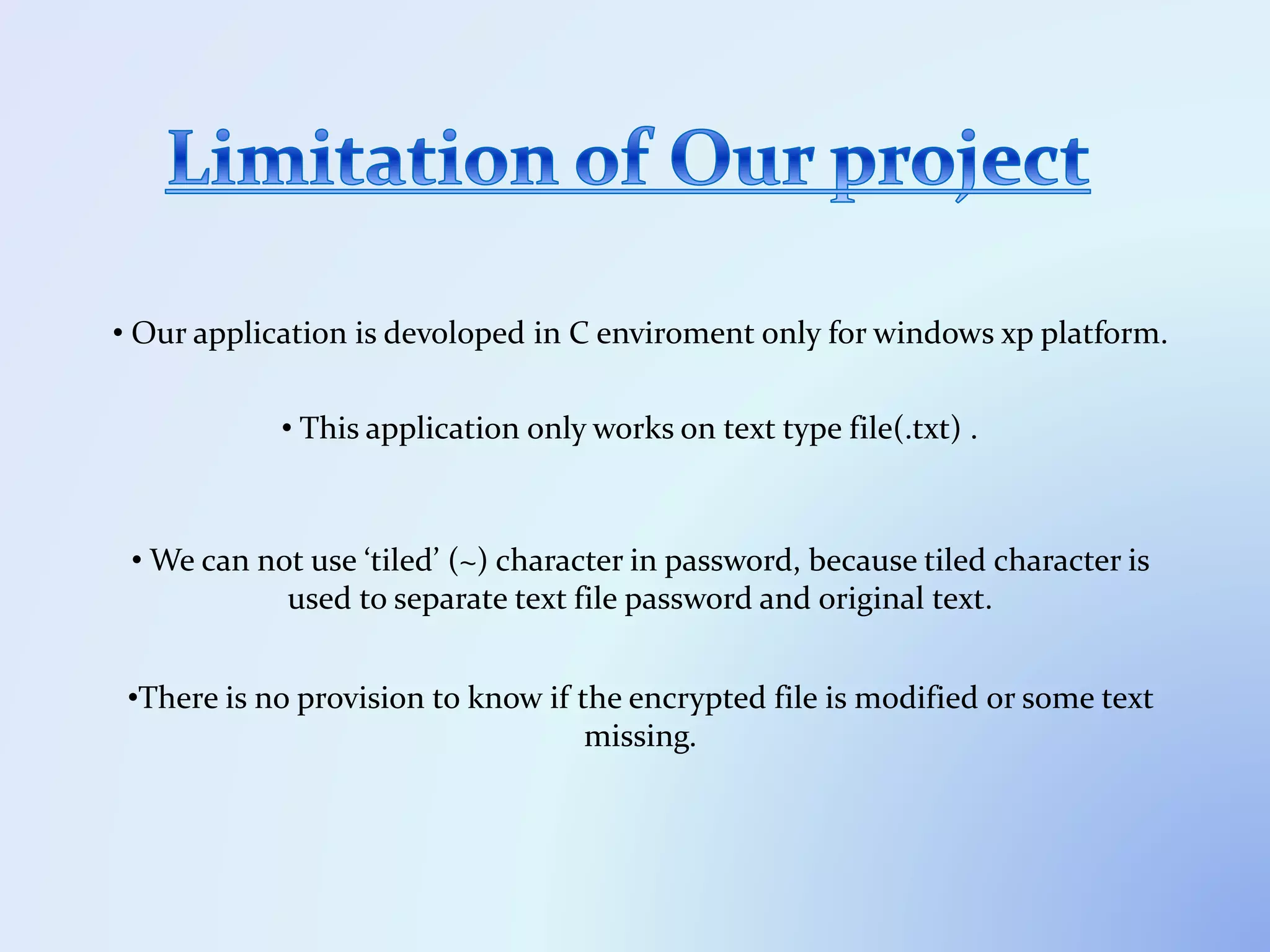
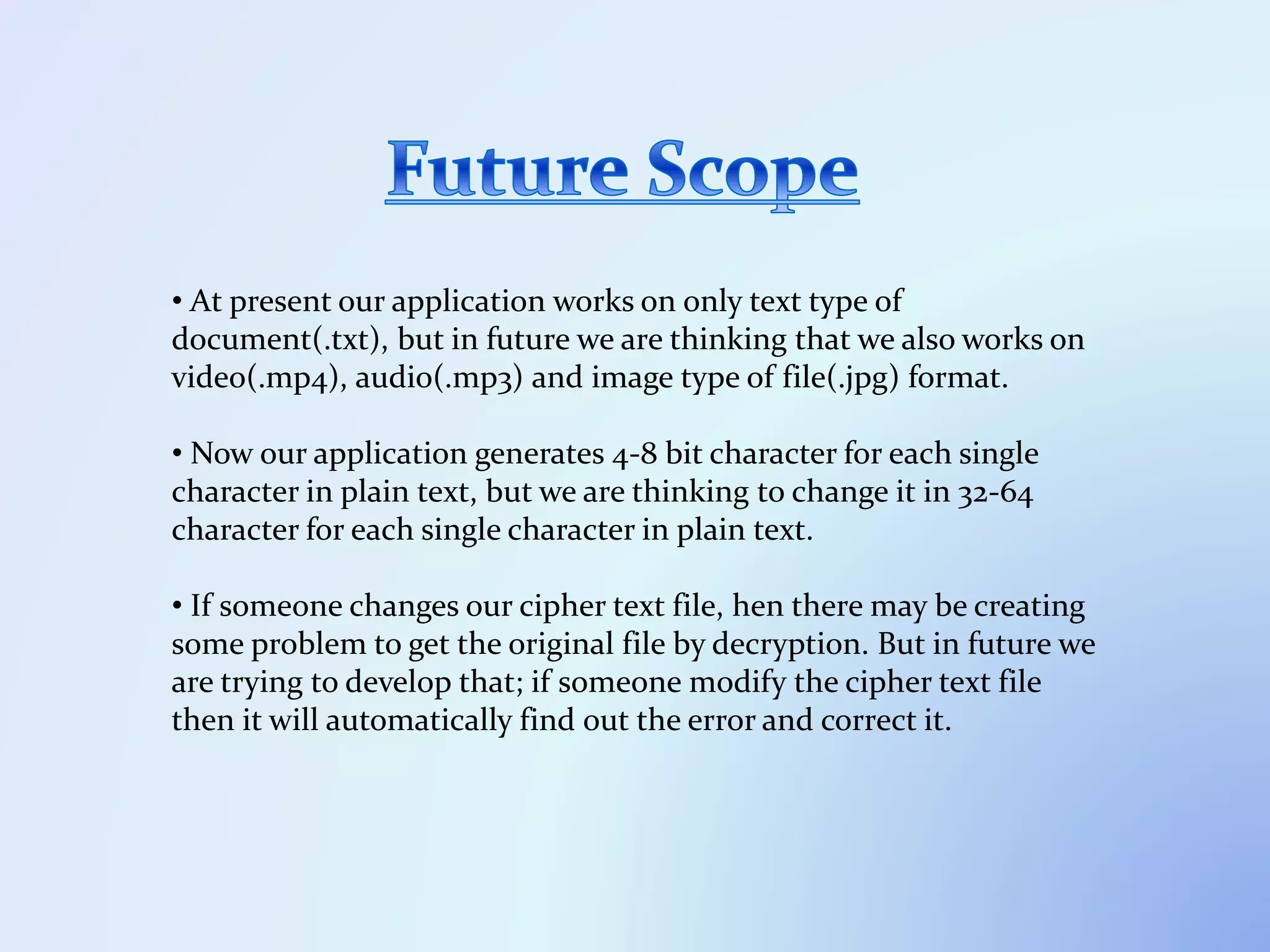
![[1] Bement A. L. et. al. (2004), Standards for Security Categorization of Federal
Information and Information Systems, Computer Security Division, Information
Technology Laboratory, National Institute of Standards and Technology
Gaithersburg, MD 20899-8900.
[2] Ayushi, (2010), A Symmetric Key Cryptographic Algorithm, International Journal
of Computer Applications (0975 - 8887) Volume 1. No. 15.
[3] Atul Kahate, (2008) Cryptography and Network Security, Tata McGraw-Hill
Education, pg. 47.
[4] Ijaz Ali Shoukat , Kamalrulnizam Abu Bakar and Mohsin Iftikhar, “A Survey about
the Latest Trends and Research Issues of Cryptographic Elements”, p 141,
International Journal of Computer Science Issues, Vol. 8, Issue 3, No. 2, May 2011,
ISSN 1694 0814.
[5] Sukalyan Som, Saikat Ghosh, “A Survey of Traditional or Character Oriented
Symmetric Key Cryptography”, International Journal of Advanced Research in
Computer Science, Vol. 2, No. 4, July-August 2011](https://image.slidesharecdn.com/presentation-150921002144-lva1-app6892/75/File-Encryption-Application-For-Windows-Based-On-Polyalphabetic-Substitution-Cipher-41-2048.jpg)

